











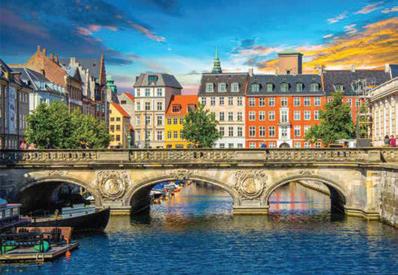








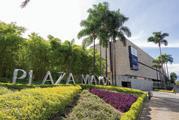
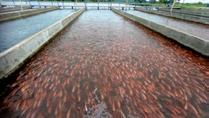

















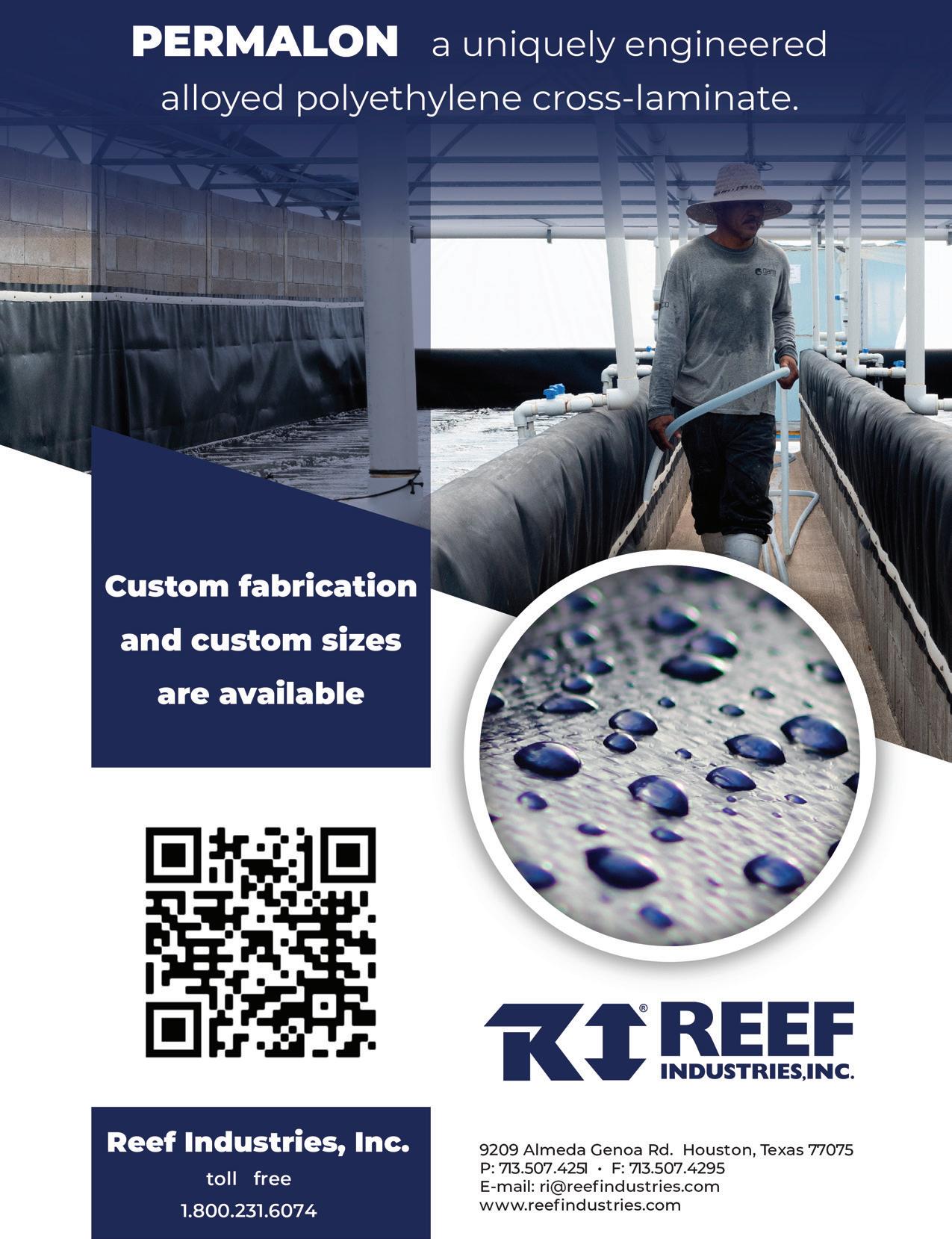
Volume 50 Number 4 August - September 2024
EDITOR’S COMMENTS
Aquaculture and Traceability
Requirements

6
ARTICLE
Optimizing Lumpfish Rearing
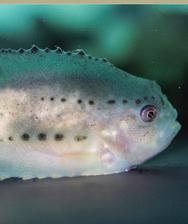
GREENHOUSES AND POND LINERS
Plastic Liners as a Simple and Effective Approach to Reduce CH4 and N2O
Emissions from Aquaculture Ponds
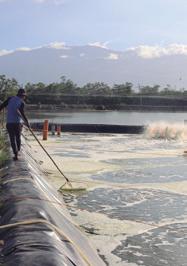
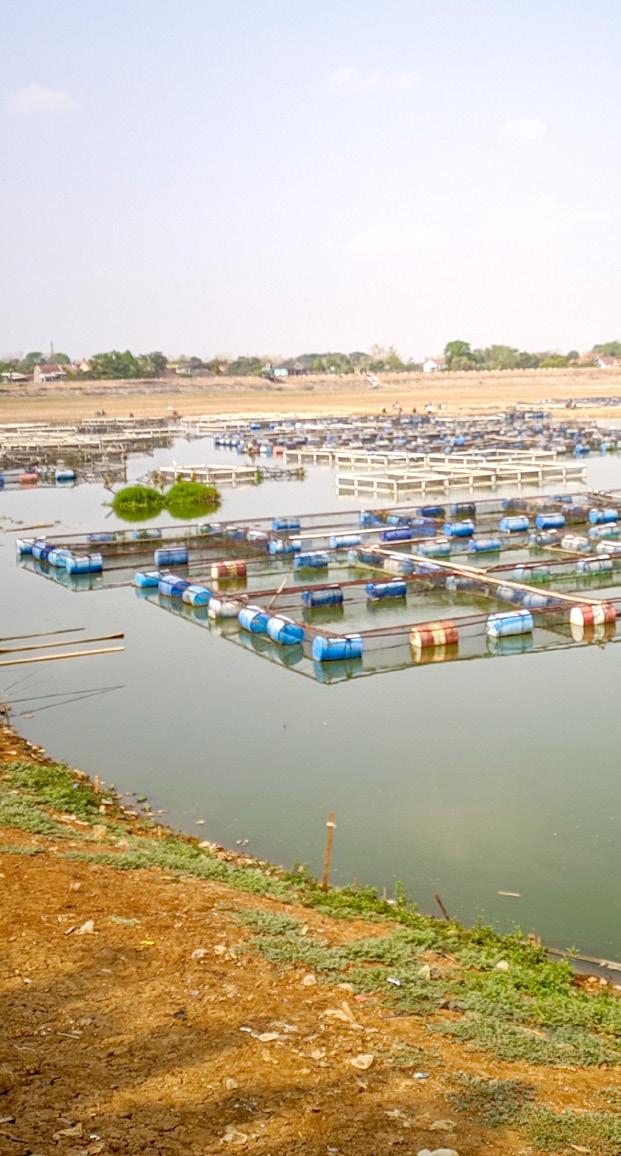
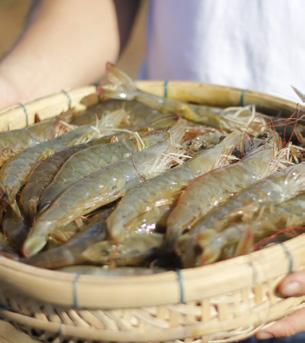
Serving the aquaculture industry for 50 years
Editor and Publisher
Salvador Meza / info@dpinternationalinc.com
Contributing Editor
Marco Linné Unzueta
Editorial Coordinator
Karelys Osta / edicion@dpinternationalinc.com
Editorial Design
Perla Neri / design@design-publications.com
Sales & Marketing Coordinator crm@dpinternationalinc.com
Sales Support Expert sse@dpinternationalinc.com
Operations Coordination
Johana Freire / opm@dpinternationalinc.com
Business Operations Manager
Adriana Zayas / administracion@design-publications.com
Subscriptions:iwantasubscription@dpinternationalinc.com
Design Publications International Inc. 401 E Sonterra Blvd. Sté. 375 San Antonio, TX. 78258
info@dpintertnatinonalinc.com
Office: +210 5043642
Office in Mexico: (+ 52) (33) 8000 0578 - Ext: 8578
Aquaculture Magazine (ISSN 0199-1388) is published bimontly, by Design Publications International Inc. All rights reserved. www.aquaculturemag.com
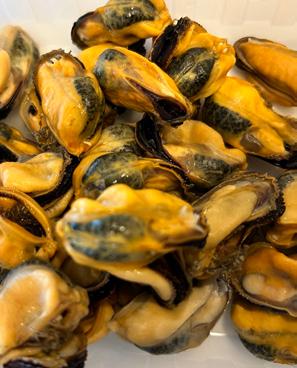
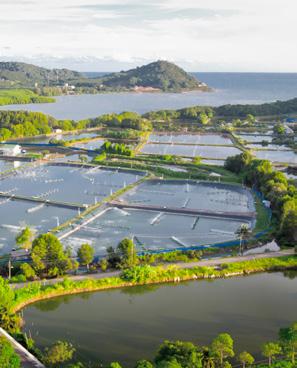
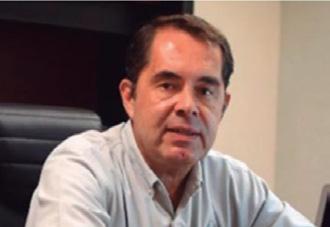
* Marco Linné
According to FAO (2016), “TRACEABILITY is defined as ‘the ability to gather the historical fabric, use or location of an item or activity by means of a recorded identification’. This refers to two main aspects: on the one hand, the identification of the product through a marking process; and on the other, the recording of data related to that product throughout the production, processing and distribution chains.”
Currently, in the fishing sector, traceability is considered a particularly relevant tool for the sustainability of fishery products, making it possible to generate schemes that promote the rational extraction of aquatic resources, generate certainty in fishing operations and promote fishery products that comply with food safety and quality standards in products and by-products, demonstrating and, in particular cases, certifying sustainable fishing practices that provide conditions to increase the value and demand for fishery products, benefiting the small-scale sector that depends on fishing.
In aquaculture, a major constraint to improving technical competitiveness is the lack of long-term vision and poor coordination of private, public, research and infrastructure activities; this barrier can be addressed
through strategic planning and coordination between relevant agencies. Strategic planning can be used to obtain funding in desired areas and improve the likelihood of success with the realization of competitive funding opportunities that allow for the development of aquaculture production monitoring schemes.
Research is generally conducted largely with the support of a fragmented matrix of short-term grant programs. Although long-term increases in funding levels can improve the competitiveness of aquaculture, more efficient use of existing funds and limited portfolios to solve practical problems that are relevant to the development needs of commercial aquaculture traceability schemes is also necessary.
As part of the actions required to establish traceability schemes for aquaculture products and by-products, qualified personnel are needed to manage and operate production facilities, as well as trained technicians and scientists to promote actions to maintain the quality of products and by-products throughout the commercial chain; therefore, it is especially important to generate support for the establishment of training programs in research or production centers operated by universities, government agencies or aquaculture companies.
In addition, there should be technology transfer programs to implement technological innovations with new and existing producers, taking into consideration that the effectiveness of any transfer program will depend, in part, on the demonstration of technologies on an appropriate commercial scale to encourage adoption on a commercial scale, as well as performance verification programs that allow evaluation and demonstration with cooperating producers and accelerate technology transfer to reach the final consumer with the pertinent information on the product in question.
Therefore, these problems are best solved systematically by multidisciplinary teams with complementary competencies to address the components of technical and commercial barriers. This approach can increase the value of investments in production, with emphasis on the identification of areas of higher risk or higher economic return and their impact, allowing to guide research priorities and evaluation of the cost-effectiveness of investments for the implementation of traceability schemes for aquaculture products and by-products.
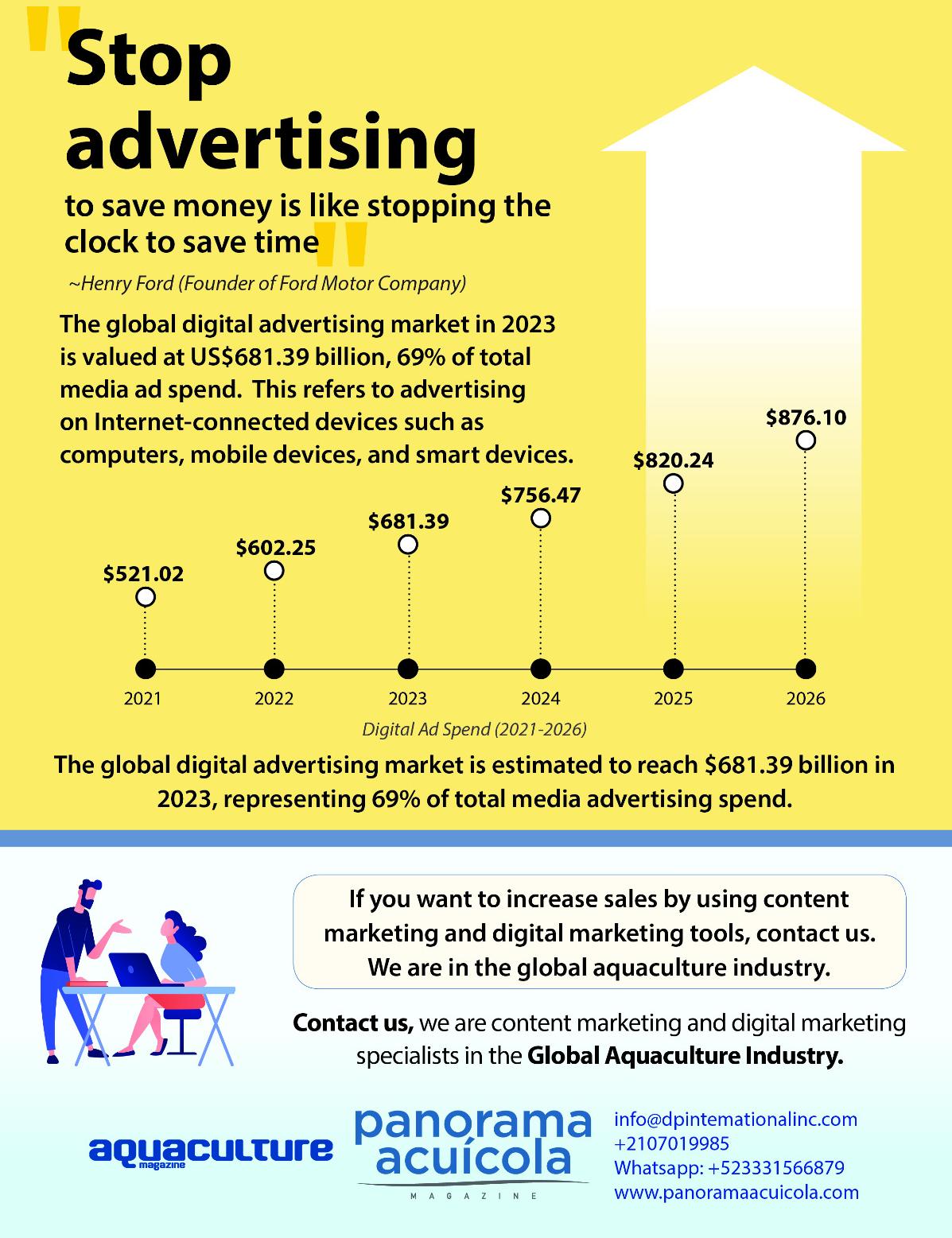
* By Nick Gosling
Salmon farms have been an important part of the northeast U.S. aquaculture industry for over 50 years, but sea lice, a pesky parasitic crustacean that feed on and injure of the salmon, have been a million-dollar problem for salmon farmers who may not be able to sell infected fish. Integrating lumpfish—a cleaner fish that naturally feeds on sea lice off salmon— into aquaculture farms can provide a sustainable mitigation strategy, but this species can be aggressive toward other, younger lumpfish, which can reduce the strategy’s effectiveness. Research at the University of New Hampshire and the New Hampshire Agricultural Experiment Station
found that lumpfish hatcheries can reduce such behavior by altering light conditions and fish densities inside tanks.
“Lumpfish are crucial in addressing the high demand for cleaner fish in salmonid farming, but their aggressive behavior, including cannibalism, poses a challenge,” said Station scientist Elizabeth Fairchild, a research associate professor with UNH’s College of Life Sciences and Agriculture (COLSA). “Understanding the factors that exacerbate lumpfish aggression, and providing guidelines for mitigating this behavior to aquaculturists, are essential for increasing hatchery production and rearing efficiency.”
Fairchild and her co-authors, including Brittany Jellison, an assistant professor in UNH’s biological sciences department, and Shelby Perry, a Master of Science student in COLSA’s marine biology program, recently published their research in the North American Journal of Aquaculture. Conducting their research at the UNH’s Coastal Marine Lab, the scientists found that, especially for smaller lumpfish, instances of tail fin nipping as a sign of aggression lessened when the fish had 12 hours of light followed by 12 hours of dark (versus constant light) and when the density of fish was reduced.
These management conditions become less influential as lumpfish
Salmon farms have been an important part of the northeast U.S. aquaculture industry for over 50 years, but sea lice, a pesky parasitic crustacean that feed on and injure of the salmon. Integrating lumpfish—a cleaner fish that naturally feeds on sea lice off salmon—into aquaculture farms can provide a sustainable mitigation strategy.
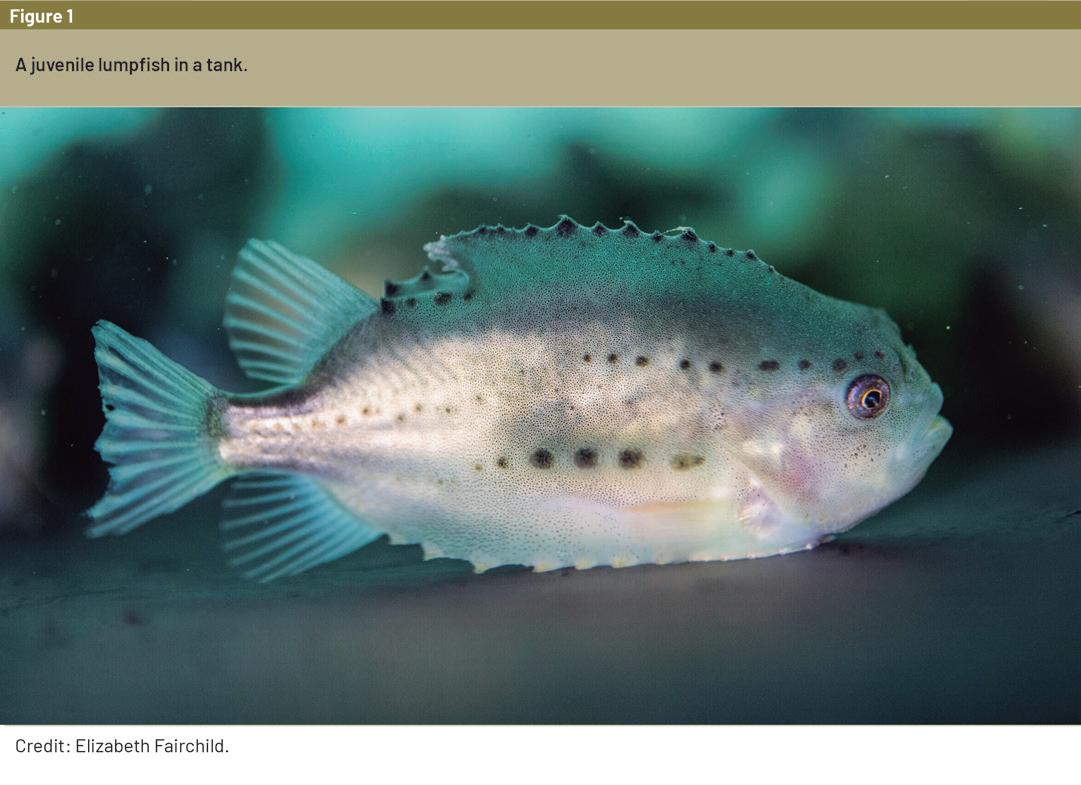
grow larger, allowing for more flexibility in rearing practices, said Fairchild. However, further research is needed to explore the long-term impacts of these conditions and to develop comprehensive guidelines for lumpfish rearing.
As more becomes known about sustainable lumpfish management in aquacultural operations, the knowledge and practices could help further develop salmon farmers’ resiliency to sea lice. The species that is particularly impactful, Lepeophtheirus salmonis, feeds on the mucus, skin and blood of salmon, causing lesions, stress and sometimes mass mortality of salmon and can cost an estimated $1.3 million per farm over a two-year production cycle in sea lice infestation management. Current mitigation methods for sea lice, including waterjets, hot water show-
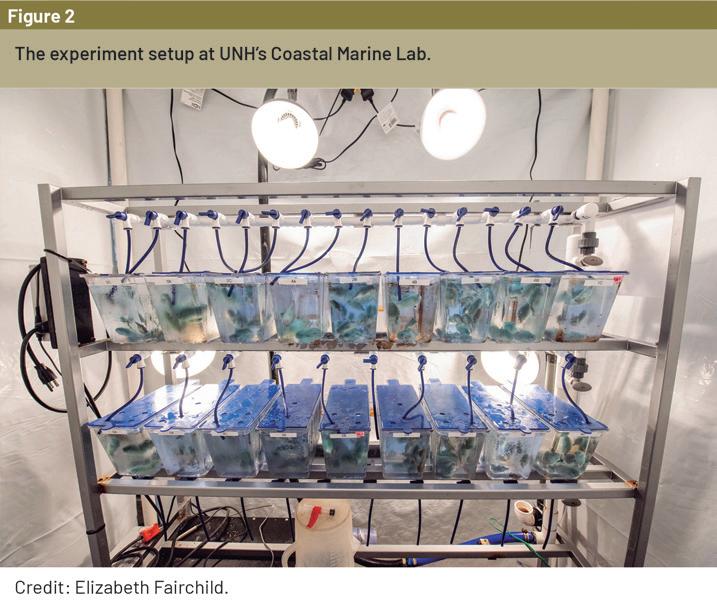
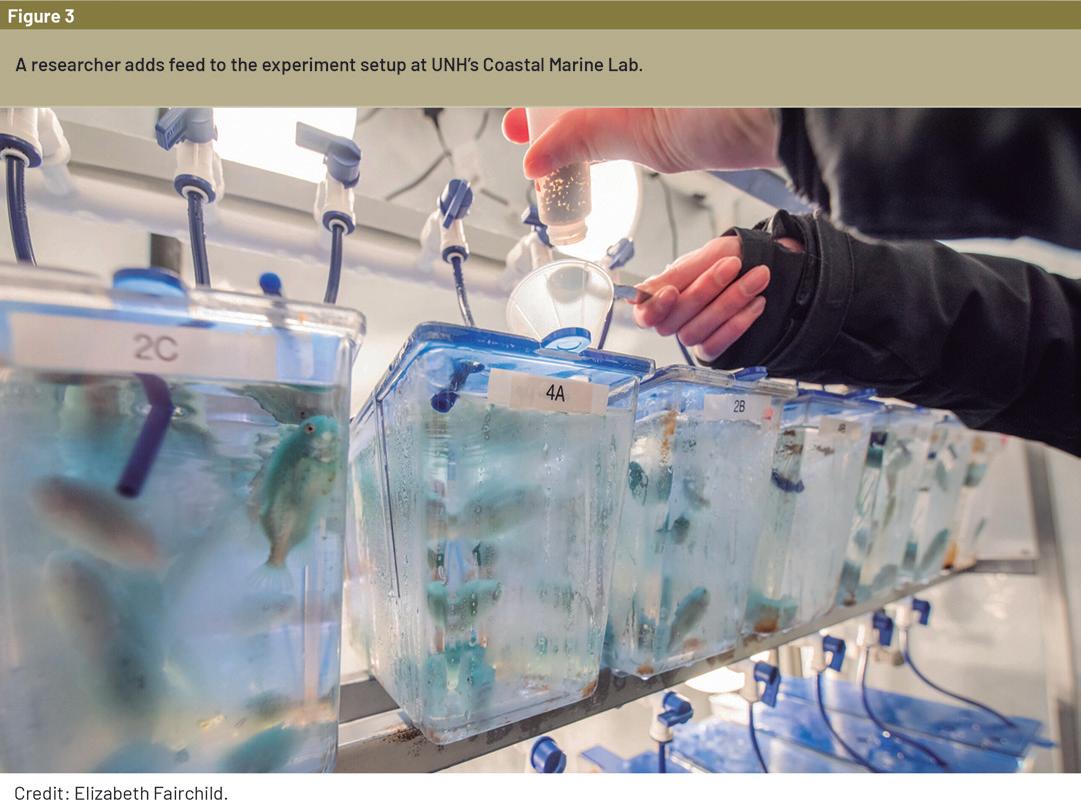
ers and other mechanical and thermal treatments, aren’t fully effective and can harm the fish, resulting in lower growth and survival rates for the salmon.
Which is why finding optimal environmental conditions for lumpfish development, thus enhancing their effectiveness as a cleaner fish in aquaculture settings, is so critical, said Perry.
“By adopting these recommendations, fish farmers can improve lumpfish hatchery production, reduce juvenile mortality and enhance the sustainability of salmonid farming through effective sea lice management,” she added. “And increasing aquaculture sustainability and efficiency is vital to meeting the future demand for animal protein, as well as protecting the planet we live on.”
This material is based on work supported by the NH Agricultural Experiment Station through joint funding from the USDA National Institute of Food and Agriculture (under Hatch award number 1026188) and the state of New Hampshire.
Understanding the factors that exacerbate lumpfish aggression, and providing guidelines for mitigating this behavior to aquaculturists, are essential for increasing hatchery production and rearing efficiency.
Founded in 1887, the NH Agricultural Experiment Station at the UNH College of Life Sciences and Agriculture is UNH’s first research center and an elemental component of New Hampshire’s land-grant university heritage and mission. We steward federal and state funding, including support from the USDA National Institute of Food and Agriculture, to provide unbiased and objective research concerning diverse aspects of sustainable agriculture and foods, aquaculture, forest management,
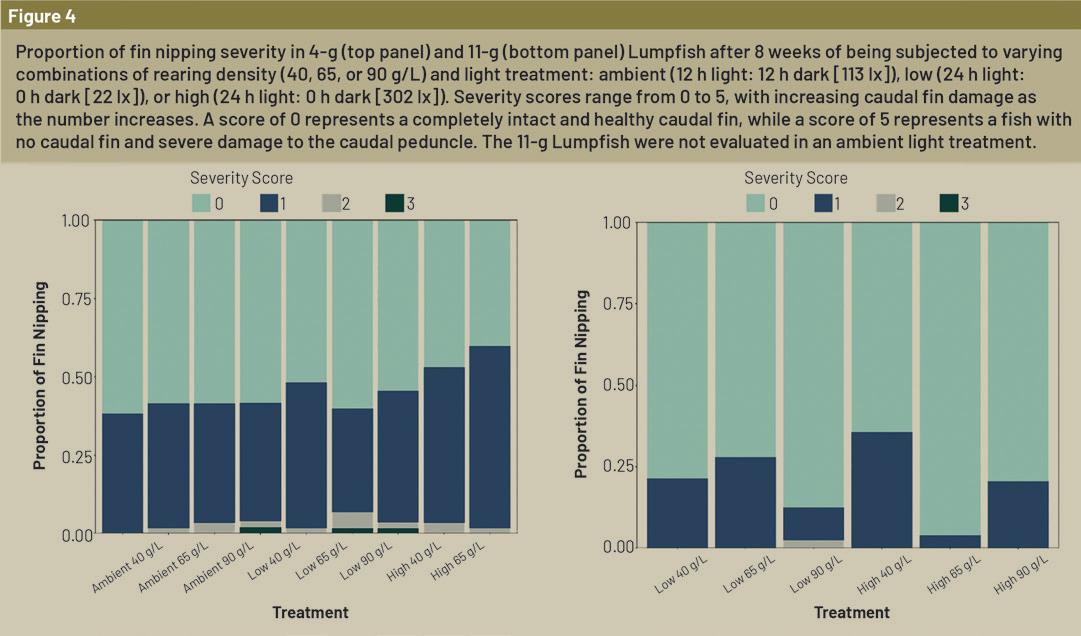
and related wildlife, natural resources, and rural community topics. We maintain the Woodman and Kingman agronomy and horticultural research farms, the Macfarlane Research Greenhouses, the Fairchild Dairy Teaching and Research Center, and the Organic Dairy Research Farm. Additional properties also provide forage, forests, and woodlands in direct support to research, teaching, and outreach.
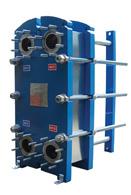
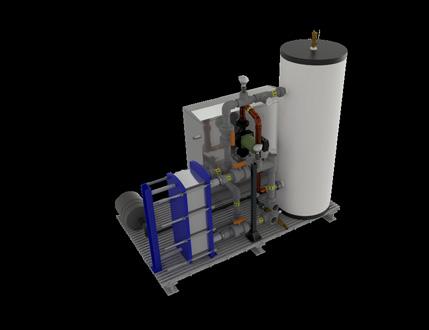
* Nick Gosling UNH College of Life Sciences and Agriculture
Contact the Researcher: Elizabeth Fairchild Research Associate Professor UNH College of Life Sciences and Agriculture Elizabeth.Fairchild@unh.edu
For further details, you can read the full research article “THE EFFECTS OF LIGHT, REARING DENSITY, AND FISH SIZE IN CULTURING JUVENILE LUMPFISH” developed by: PERRY, S., FAIRCHAILD, E.-University of New Hampshire, and JELLISON, B. The original article was published on JULY, 2024, through NORTH AMERICAN JOURNAL OF AQUACULTURE. The full version can be accessed online through this DOI: 10.1002/naaq.10347.
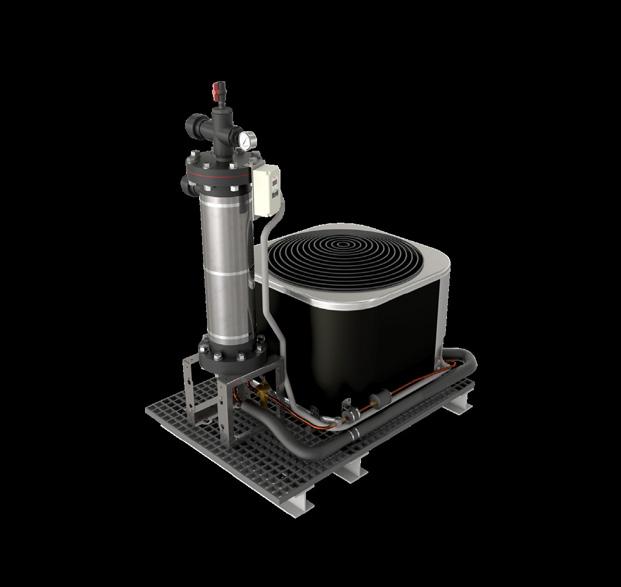



* By Aquaculture Magazine Editorial Team
The global aquaculture sector has expanded rapidly due to rising food demands and diminishing natural marine resources (FAO, 2022; Xu et al., 2023). There is an estimated total of ~180,000 km2 of aquaculture ponds globally (FAO, 2019; Zhang et al., 2023), with Asia accounting for an overwhelming 91.6% of the world’s aquaculture production, and over half of that comes from mainland China (FAO, 2022; Tian et al., 2024).
The vast majority of the shrimp farms in China consist of small-hold earthen ponds with minimal management intervention (Avnimelech and Ritvo, 2003; Pouil et al., 2019; Saraswathy et al., 2022). The pond sediment, influenced by excessive use of fertilizers, unconsumed feeds and animal debris, often acts as a res-
The aquaculture sector contributes significantly to methane (CH4) and nitrous oxide (N2O) emissions. This study compared the emissions of earthen aquaculture ponds and plastic-lined aquaculture ponds at a shrimp farm in the Beibu Gulf. Plasticlined aquaculture ponds reduced CH4 emissions by 96% and N2O emissions by 79%, improving ecological sustainability and production.
ervoir of pollutants and pathogens. Some farmers install plastic liners in shrimp ponds to seal off the sediment, which proves to be an effective approach to prevent seepage and enhance water quality and animal health (Naranjo-Paramo et al., 2022; Satanwat et al., 2023; Saraswathy et al., 2022).
In addition to being a potential source of nutrient pollutants and pathogens, aquaculture ponds may act as hotspots for greenhouse gas (GHG) emissions including CH4 and N2O. To properly investigate the effectiveness of plastic liners in lowering GHG emissions, it was conducted a study in Beibu Gulf, China to explore the effects of plastic liners on CH4 and N2O emissions and their major driving factors in aquaculture ponds.
Materials and methods
The research was carried out in the Zhulin aquaculture farm in Beibu Gulf, Guangxi, China. In the study area, the prevalent pond types are earthen aquaculture ponds (EAPs) and plastic-lined aquaculture ponds (PLAPs) for monospecific culturing of Litopenaeus vannamei
For this study, water and gas samples were collected from three EAPs and three PLAPs. In each of the ponds, there was one sampling site near the edge of the pond, one at the center of the pond, and one at the midway point between the two. Taking into account the three different stages (i.e. initial, middle and final) of the growout cycle as well as the logistics. In the laboratory, water samples were analyzed for dissolved CH4 and N2O concentrations.
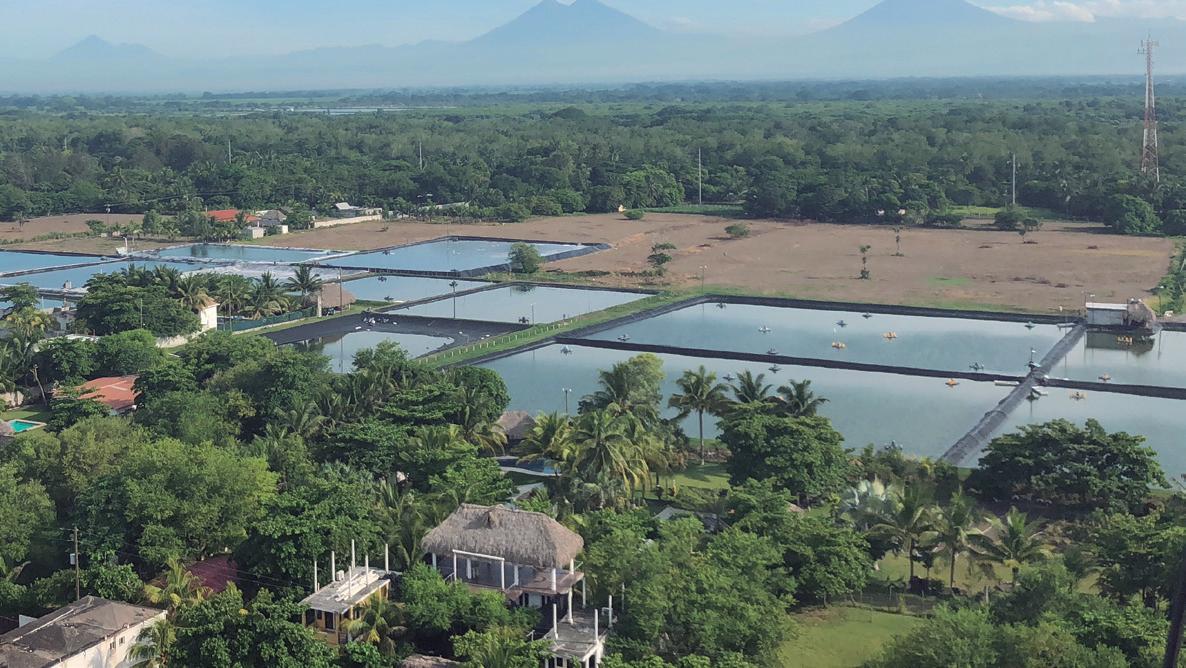
Some farmers install plastic liners in shrimp ponds to seal off the sediment, which proves to be an effective approach to prevent seepage and enhance water quality and animal health.
When comparing across farming stages, we observed generally lower salinity and dissolved oxygen (DO), but higher total organic carbon (TOC) and nitrogen substrates during the middle stage. While dissolved CH4 and N2O concentrations in the two aquaculture pond types were highly variable, ranging from 0.1 to 0.5 µmol L− 1 (Figure 1) and 1.5–87.5 nmol L− 1 (Figure 1c), respectively, and were always supersaturated with respect to the atmosphere (Figure 1b and 1d). Overall, the mean CH4 and N2O concentrations in EAPs were significantly higher than those in PLAPs (Figure 1a). CH4 and N2O concentrations also showed significant variations in time (Figure 1a and 1c), with considerably higher values during the middle farming stage.
The average CH4 flux in EAPs was significantly greater than that in PLAPs. Both aquaculture pond types showed similar temporal patterns,

In addition to being a potential source of nutrient pollutants and pathogens, aquaculture ponds may act as hotspots for greenhouse gas (GHG) emissions including CH4 and N2O.
with much higher CH4 emission fluxes in the middle farming stage (Figure 2a). In EAPs, ebullitive CH4 flux was 144.2–2547.6 µg m− 2 h− 1 which accounted for 87.9–92.0% of the total CH4 emission (Figure 2b). In contrast, diffusion was the dominant transport pathway in PLAPs, accounting for 94.3–97.4% of the CH4 emission (Figure 2d).
Seasonally, the highest N2O emission fluxes were observed in the middle farming stage, with a mean value of 9.6±1.9 μg m− 2 h− 1 in EAPs and 1.7±0.3 μg m− 2 h− 1 in PLAPs which were about 2–10 times higher than the other stages (p<0.001).
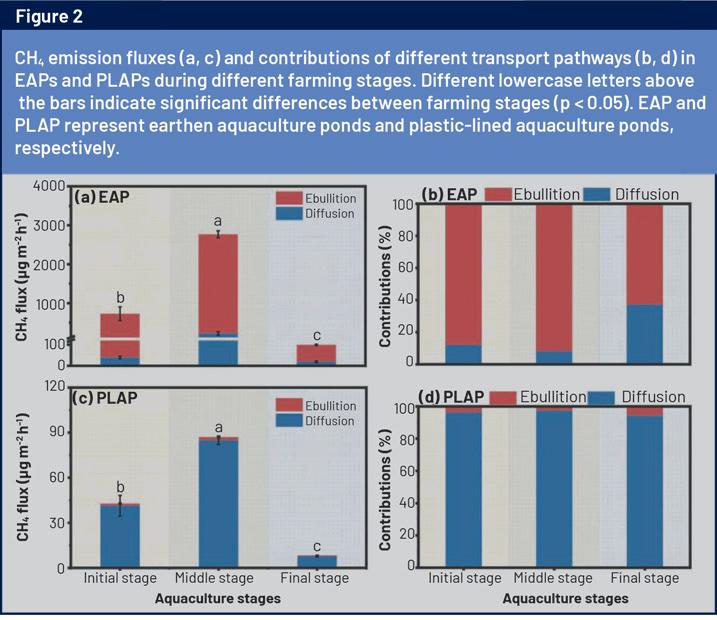
In terms of environmental drivers of GHG concentrations and fluxes, between the two aquaculture pond types, the variations in CCH4 (or CN2O) and FCH4 (or FN2O) correlated positively with air temperature (TA), water temperature (TW), TOC and nitrogenous substrates (e.g., total dissolved nitrogen [TDN], NH4+-N) (p<0.01), but
negatively with DO and salinity (SAL) (p < 0.05). According to SEM analysis, substrate availability had a direct positive effect on dissolved GHG concentrations, subsequently impacting GHG emissions (Figure 3). Conversely, DO and salinity negatively impacted FCH4 and FN2O, respectively (Figure 3).
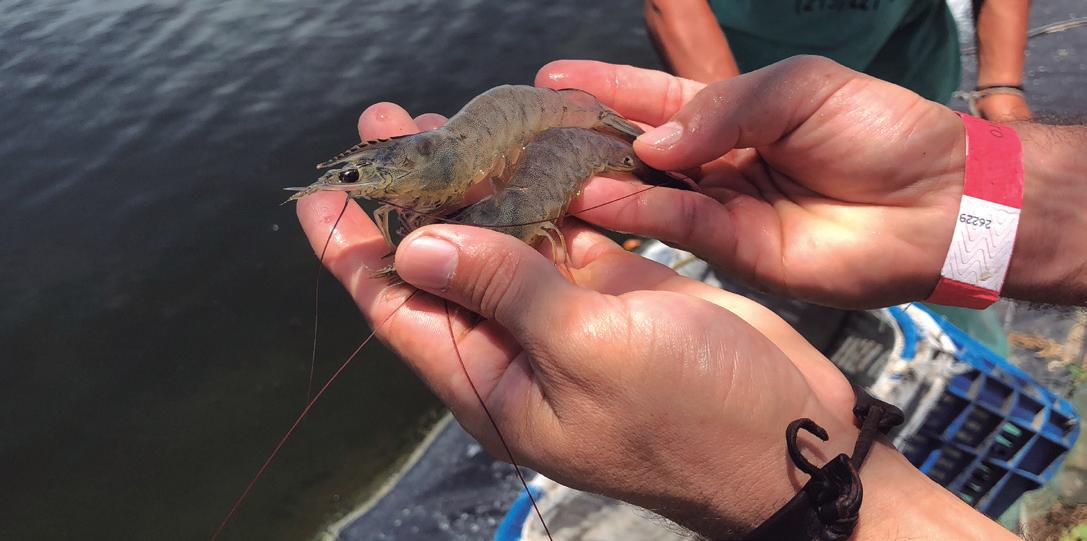
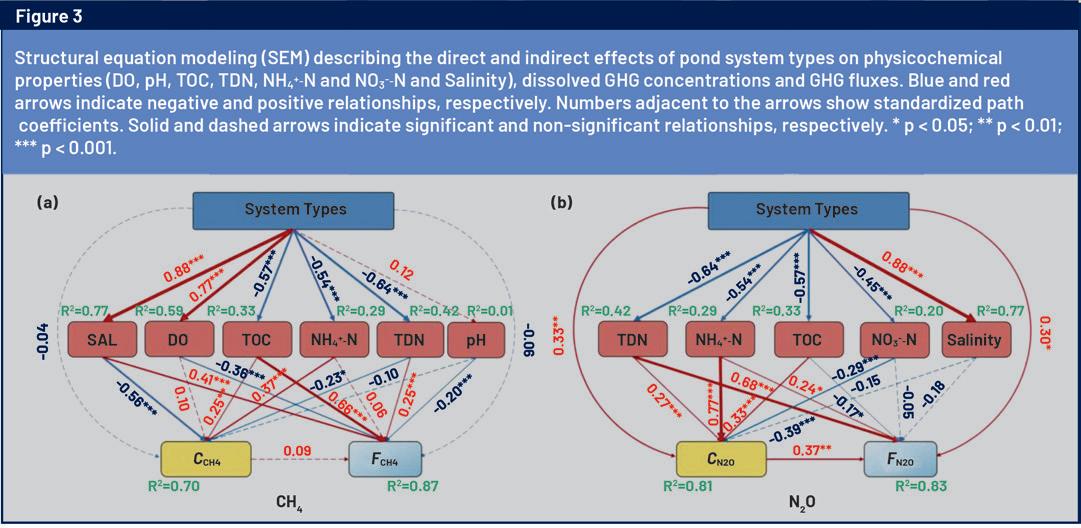
The two sets of shrimp ponds in this study were virtually identical in terms of physical dimensions and farming practice, with the only difference being the installation of plastic liners in PLAPs in the initial setup, thereby allowing a direct comparison between the two to assess the environmental benefits of plastic liners.
Despite the fact that both EAPs and PLAPs had the same stocking density and feed application, TOC, TDN and inorganic N contents were all significantly higher in EAPs, particularly during the middle farming stage when farmers increased feed quantity to boost shrimp growth (Yang et al., 2020). In the case of EAPs, some of the organic debris would be decomposed by sediment microbes, returning carbon and nitrogen to the water column as TOC, TDN, NO3--N and NH4+N, and the higher microbial activities would have consumed more oxygen, as reflected in the lower DO levels in EAPs. In PLAPs, feed and waste that had settled out of the water column would not come into contact with the sediment, and the shrimp could still pick food particles off of the liner surface, resulting in less waste and higher yield, as indicated by the lower carbon and nitrogen levels and lower feed conversion ratio (FCR) in PLAPs.
Microbial production of CH4 within the anoxic sediment still required organic input from the overlying water in the form of unconsumed feed and animal debris. By sealing off the sediment, the plastic liners in PLAPs effectively prevented sediment methanogenesis such that the ebullitive flux was reduced to a negligible amount, and the total CH4 emission was decreased by 96% (Figure 2c).
In aerated earthen shrimp ponds, anoxic N2O production would occur predominantly in the sediment. Therefore, installation of plastic liners would eliminate N2O output from anoxic sediment. Between EAPs and PLAPs, the data showed that plastic liners lowered the N2O concentration by 2-fold (initial and final stages) to as much as 7-fold (middle stage), suggesting that sediment microbial processes contributed 50–86% of the dissolved N2O in the ponds (Figure 1c). Accordingly, N2O emission was reduced by 79% in PLAPs relative to EAPs.
This study results showed that the plastic liners in PLAPs significantly lowered both CH4 and N2O emissions relative to EAPs across all three farming stages. Based on the average flux values in PLAPs, it was calculated that plastic liners decreased GHG emission by 6910 mg CH4 m− 2 and 20 mg
N2O m− 2 over the entire farming cycle (245 days per year). Considering the warming potentials of CH4 and N2O in a century time scale, this is equal to a combined reduction of 199.4 g CO2-eq m− 2 per year.
This study showed that installation of plastic liners offers a simple and effective way to cut down GHG emissions from earthen aquaculture ponds with minimal intervention, although government subsidy may be needed to encourage a wider implementation among small-hold farmers.
This article is sponsored by: REFF INDUSTRIES INC.

This is a summarized version developed by the editorial team of Aquaculture Magazine based on the review article titled “PLASTIC LINERS AS A SIMPLE AND EFFECTIVE APPROACH TO REDUCE CH4 AND N2O EMISSIONS FROM AQUACULTURE PONDS” developed by: YANG, P. - Fujian Normal University, SU, Z. - Guangxi Mangrove Research Center, TANG, K. – Swansea University and Texas A&M University, YANG, H. - University of Reading, TANG, L. - Fujian Normal University, ZHANG, L.Fujian Normal University. The original article was published, including tables and figures, on JULY, 2024, through AGRICULTURE, ECOSYSTEMS AND ENVIRONMENT. The full version can be accessed online through this link: https://doi.org/10.1016/j.agee.2024.109191
Foodborne pathogens are biological organisms (bacteria, viruses, and parasites) that have the potential to cause illnesses through food. When compared to other animal protein sources, seafood is seen to be a healthier option. However, eating spoiled seafood is a leading cause of mortality and hospital admission, especially in emerging and impoverished nations. Therefore, this article discusses the various illnesses that might affect seafood as well as prevention procedures.
* By Vivek Chauhan, Arya Singh, Shyni K, Shashank Singh
Foodborne pathogens are biological organisms (bacteria, viruses, and parasites) that have the potential to cause illnesses through food. When compared to other animal protein sources, seafood is seen to be a healthier option. Due to their abundance in omega-3
fatty acids, vitamin D, selenium, and iodine, they also provide additional health advantages (Mahaffey et al., 2008). It has been demonstrated that seafood protects against cardiovascular disease and improves brain, vision, and cognitive development in new-borns and young children (Em-
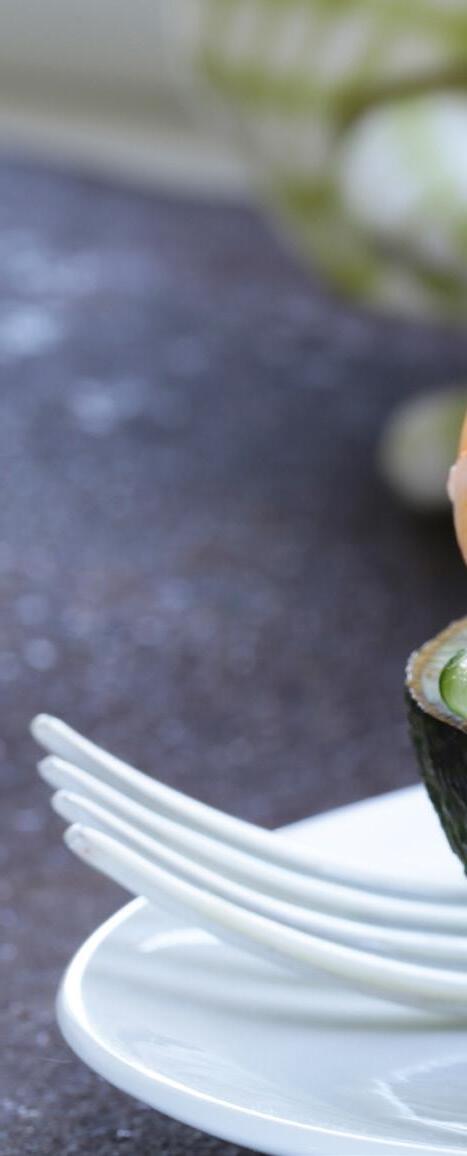
mett et al., 2013). Eating spoiled seafood is a leading cause of mortality and hospital admission, especially in emerging and impoverished nations. Therefore, this article discusses the various illnesses that might affect seafood as well as prevention procedures.

Salmonella are facultative anaerobic Gram-negative bacteria with a rod-like structure. The symptoms begin 12–72 hours after consuming infected food and include diarrhea and mild to severe intestinal inflammation. In the US, it is the second most common cause of foodborne illness.
Vibrio spp
Numerous Vibrio sp are being identified as the reasons of foodborne illnesses. Gram-negative, rod-shaped, curved, non-spore-forming, motile, facultative anaerobic bacteria are the characters of genus Vibrio. The three pathogenic species that are most probable to infect humans are Vibrio cholerae, V. parahaemolyticus, and V. vulnificus. When individuals eat undercooked or raw diseased fish, there is a significant risk of microbiological dangers to human health that can result in illnesses related to seafood (Scallan et al., 2011). According to Scallan et al. (2011), this bacteria was the cause of around 96 illnesses, 91 hospitalizations, and about 35 fatalities in the US per year.
Listeria monocytogenes
Several outbreaks have been linked to the consumption of seafood contaminated with L. monocytogenes, which is responsible for 4% of global product detentions due to bacterial contamination (Gudmundsdottir et al., 2006). Listeriosis, a foodborne illness caused by Listeria species and associated with seafood, can be transmitted to humans through the consumption of packaged seafood products (Miya et al., 2010).
Symptoms of listeriosis include chills, nausea, fever, and gastroenteritis, and can escalate to more severe conditions like septicemia, meningitis, encephalitis, abortion, and even death (Barbuddhe et al., 2008). Pregnant women, individuals with weakened immune systems, and the elderly are at a higher risk of contracting listeriosis (Parihar et al., 2008).
Salmonella are facultative anaerobic Gram-negative bacteria with a rodlike structure. The symptoms begin 12–72 hours after consuming infected food and include diarrhea and mild to severe intestinal inflammation. In the US, it is the second most common cause of foodborne illness. Between 1973 and 2006, the intake of seafood was linked to 18 outbreaks of Salmonella, which resulted in 374 recorded cases of sickness and 28 hospitalizations in the United States (Iwamoto et al., 2010). Salmonellosis can be contracted by consuming raw or undercooked shellfish, mollusks, and crustaceans. Salmonella spp. have also been shown to be very common in Asian nations, especially in tropical areas.
The neurotoxin that C. botulinum produces is the source of foodborne
botulism, a sickness primarily contracted through eating of processed, unclean seafood. Human foodborne botulism is caused by toxins A, B, E, and F that are produced by the bacteria and are categorized according to immunological criteria (Iwamoto et al., 2010). Notably, at temperatures in refrigeration as low as 3.3°C, C. botulinum type E, the most commonly found form linked to the aquatic environment, could multiply and produce the neurotoxin (Horowitz, 2010).
Enterotoxigenic S. aureus is mostly found in humans, and handling of seafood in unsanitary settings could introduce it. Regarding food security, this bacterium’s pathogenicity and virulence are due to the staphylococcal enterotoxins it produces. These enterotoxins can induce gastroenteritis, which is primarily seen in patients as vomiting (Argudin et al., 2010; Fisher et al., 2018).
In Bangladesh and India, there have been a few small outbreaks of Aeromonas spp linked to seafood. Epizootic Ulcerative Syndrome (EUS) in various fish is caused by Aeromonas spp, which seriously compro-

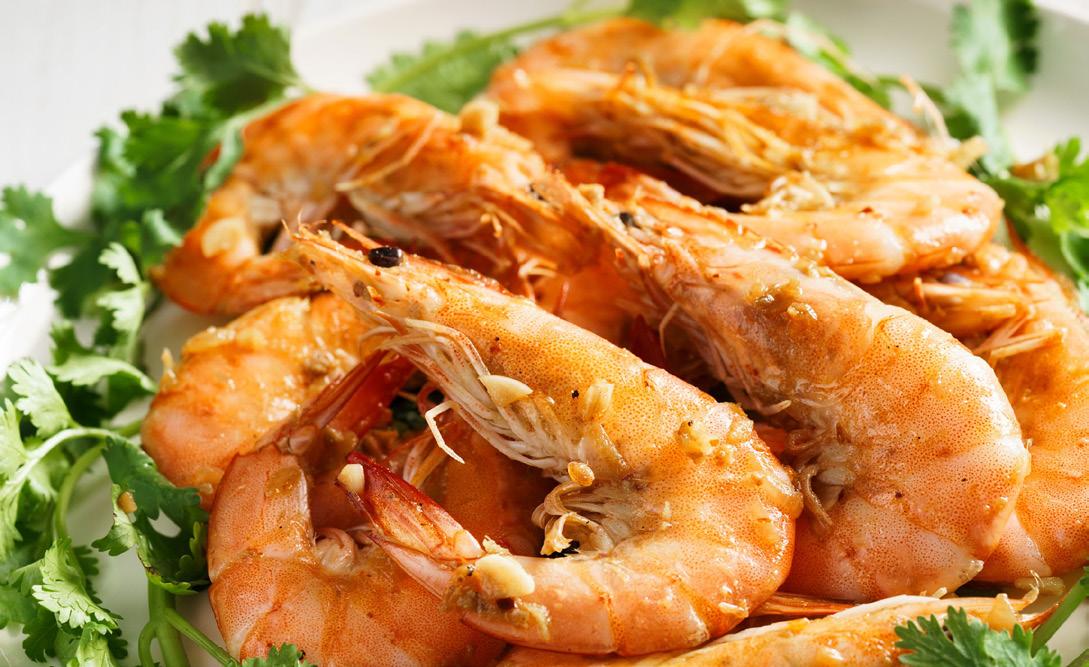
Numerous Vibrio sp are being identified as the reasons of foodborne illnesses. Gramnegative, rod-shaped, curved, non-sporeforming, motile, facultative anaerobic bacteria are the characters of genus Vibrio.
mises the nutritional value of seafood products. According to Aberoum and Jooyandeh (2010), the colonization of the gut by this bacteria in the marine environment may be the cause of the contamination of seafood. Frozen shrimp include the A. hydrophila HG2 and HG3 strains that are thought to be responsible for outbreaks in Finland (Hanninen et al., 1997).
There are a small number of instances of shigellosis due to the ingestion of seafood items. In their study, Wang et al. (2011) found that 32% of seafood samples (including shrimps, salmon, and tilapia) tested positive for Shigella spp using PCR, but none were successfully isolated using culture methods. S. dysenteriae was found in two types of edible fishes, Megalaspis
cordyla and Priacanthus hamrur, in India (Sujatha et al., 2011). Fever, abdominal pain, tenesmus, and bloody diarrhea are all signs of shigellosis. This bacterium can survive in stomach acid by utilizing its multiple virulence factors to attack intestinal cells (Wang et al., 2011).
Escherichia coli serogroup 0157 is considered a significant foodborne pathogen in various regions globally (WHO, 1997). E. coli is capable of producing numerous enterotoxins, making it a common culprit for causing foodborne infections (Sharma et al., 2005). Infection with E. coli 0157:H7 can lead to intense bloody diarrhea (Haemorrhagic Colitis, HC), as well as ongoing issues like Haemolytic Uraemic Syndrome (Kumar et al., 2001).
Referred to as “RNA calicivirus,” this infection is highly contagious and affects humans. Norovirus is divided into two Geno groups, GI and GII, both of which can lead to human infection (Woods et al., 2016; Bazzardi et al., 2014). This illness, caused by consuming undercooked shellfish and oysters, is identified as the main cause of digestive issues without the presence of bacteria (Woods et al., 2016). Mussels and clams, crab, prawn, and finfish were identified as the primary origins of norovirus (Bazzardi et al., 2014). This infection presents symptoms such as vomiting, feeling nauseous, experiencing abdominal cramps, headache, and fever (Iwamoto et al., 2010).
It is a non-enveloped virus that is a part of the Hepatovirus genus and the Picornaviridae family. Hepatitis A virus is naturally found in humans and other vertebrates’ habitats (ICTV, 2012). Signs of this illness may manifest within 2 to 3 weeks (WHO, 2016) or even as long as 45 days (Richards, 2013). Children show no signs; majority of patients experience mild symptoms but these may be intense in elderly or immunocompromised individuals. Signs of this illness include lack of appetite, high body temperature, stomach discomfort, yellowing of the skin, and loose stools (Ghasemian et al., 2016). HAV is a serious illness with a minimal mortality rate. The primary causes of this illness include using water contaminated with faeces, consuming seafood that is contaminated, and poor hygiene practices (Richards, 2013).
Certain harmful bacteria are commonly found in the water (C. botulinum type E, pathogenic Vibrio sp, Aeromonas sp) and the surroundings (C. botulinum type A, B, Listeria monocytogenes). Therefore, these pathogens could also be present on the live fish or raw fish material. It is either not possible or highly challenging to avoid pre-harvest contamination with disease agents. It is difficult to alter nature, so disease-causing agents like pathogenic bacteria, parasites, and biotoxins will always exist naturally, while prevention of chemical and faecal pollution (such as some pathogenic bacteria and enteric viruses) comes with a price. Monitoring the fishing areas for toxic algae and faecal pollution is crucial as an immediate preventive measure (Oliver, 1988; Richards, 1985). Regrettably, a more precise indicator for the presence of viruses in shellfish or their surrounding waters has not yet been discovered.
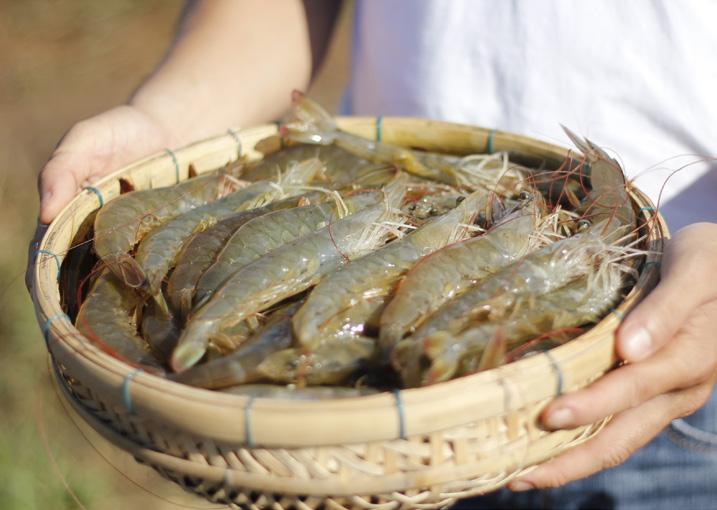
While processing fish products, harmful microorganisms from the raw material might remain in the final product or could be removed. Additionally, there is the potential for further contamination with new pathogens. Potential post-harvest hazards or defects include physical hazards such as foreign material contamination
(glass, metal) or presence of bones in boneless cuts. Measures to prevent post-harvest contamination include good manufacturing practices (GMP), sanitation programs, proper factory construction as specified in SSOP, and USA-required “prerequisites” (Federal Register, Vol). European legislation (Directive, 1991), Codex Alimentarius (FAO/WHO, 1997), and 60 No. 242, 1995 part 123 specify the regulations.

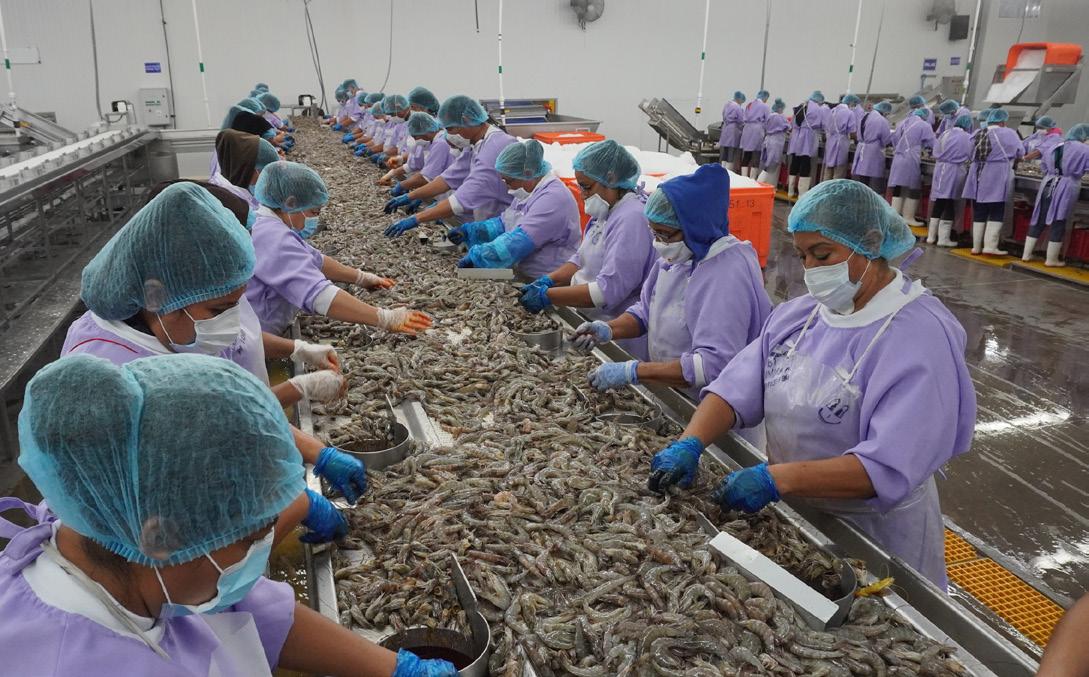
Infection with Escherichia coli 0157:H7 can lead to intense bloody diarrhea (Haemorrhagic Colitis, HC), as well as ongoing issues like Haemolytic Uraemic Syndrome.
The primary approach adopted by many countries to decrease food safety risks has been to minimize the initial presence of microbes. Many studies have been conducted to establish safe preservative conditions for inhibiting the growth of harmful pathogens, and in most instances, these conditions are widely recognized and can be implemented. Some cases include the development of L. monocytogenes in lightly preserved fish items (e.g., cold smoked salmon). The typical preservative factors (smoke components, 3-5% water phase salt (WPS), storage temperature < 5°C) alone cannot prevent growth, so additional mea-
sures (shelf life constraints) must be implemented or devised.
Various types of bacteria such as Vibrio spp, Salmonella spp, L. monocytogenes, S. aureus, C. botulinum, Shigella spp, and Aeromonas spp pose a microbiological threat to seafood. These bacteria are able to infect seafood products at any point in the supply chain, from the farm to the consumer’s table. Reducing bacterial risks is possible by preserving the microbiological water quality of household catch, handling after harvesting, and maintaining good hygiene, adhering to GMP, GHP, and HACCP guidelines. Additional methods to avoid foodborne illnesses
from seafood consumption include educating consumers on proper food handling techniques, preparing seafood correctly, and storing it appropriately.
References and sources consulted by the author on the elaboration of this article are available under previous request to our editorial staff.
Vivek Chauhan
Kerala University of Fisheries and Ocean Studies, Kochi, Kerala, 682506
Arya Singh
ICAR – Central Institute of Fisheries Education, Mumbai, 400061
Shyni K
Kerala University of Fisheries and Ocean Studies, Kochi, Kerala, 682506
Shashank Singh
Acharya Narendra Deva University of Agriculture and Technology, Kumarganj, 224229
Email: vivekvijaysingh1@gmail.com

* By Nayan Chouhan and Bhavesh Choudhary
In the ever-changing aquaculture ecosystem, sustaining the health and production of aquatic species is critical. Probiotics have emerged as a promising tool in this endeavor, providing a natural and long-term approach to improving growth, increasing immunity, and reducing sickness (Singh et al., 2023). However, incorporating probiotics into aquaculture methods presents a unique set of obstacles and implications that require careful attention and strategic planning. Although probiotics in aquaculture have gained popularity, there is still a major knowledge vacuum about their broad applicability, efficacy, and potential environmental advantages. The available literature is mostly concerned with the particular effects of probiotics on specific species or environmental conditions, which limits our understanding of their broader application across various aquaculture systems. Further study is required to close the knowledge gap and guide future directions (Amenyogbe, 2023).
The success of probiotics is primarily dependent on the choice of strains that are compatible with the target species and the aquaculture environment (Shewale et al., 2014). Research and experiments are required to determine the most effective probiotic candidates for certain uses (Figure 1). Choosing the proper strain of probiotics is critical since different strains might have varying impacts on fish health. This decision presents various obstacles and concerns that must be properly addressed.
1. One of the primary challenges lies in understanding the specific health benefits associated with each strain. Probiotics can target various conditions, such as gut health, immune support, and even mental well-being, so it is vital to choose a strain with the desired therapeutic properties.
2. The viability and stability of the chosen strain during storage and
Incorporating probiotics into aquaculture
presents a unique set of obstacles and implications that require careful attention and strategic planning. Although probiotics in aquaculture have gained popularity, there is still a major knowledge vacuum about their broad applicability, efficacy, and potential environmental advantages.
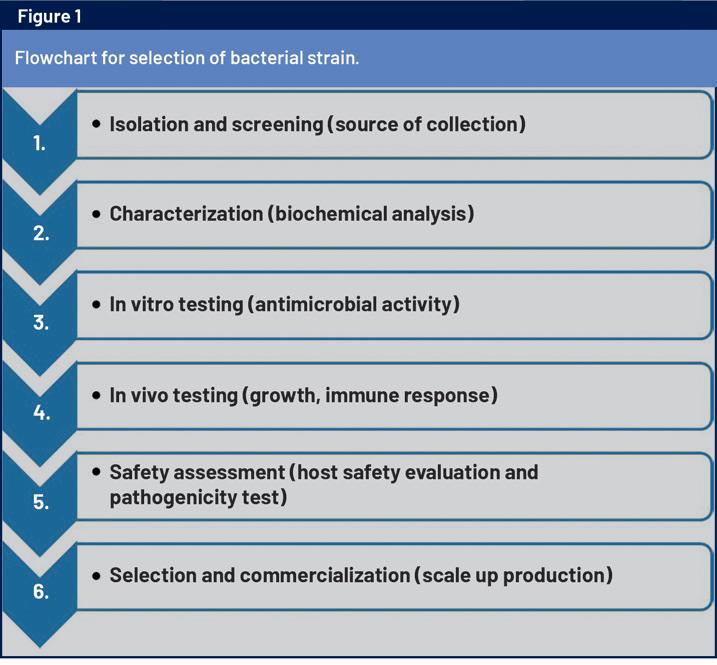
transit are essential factors. Probiotics are living organisms, and their efficacy depends on their ability to survive the harsh conditions of manufacturing, transportation, and storage before reaching the consumer. Ensuring high viability is crucial to guarantee their effectiveness.
3. Another critical consideration is strain safety. While most probiotic strains are generally regarded as safe for consumption, certain fishes, such as those with compromised immune systems or underlying health conditions, may
experience adverse reactions. Therefore, it is necessary to select strains that are well-studied and have a proven safety profile.
4. Furthermore, compatibility with existing treatments is a key factor in selecting probiotic strains. Some medications and prophylaxis applications to aqua farm may interact with certain strains, leading to potential complications. So, fish health professionals should be consulted to ensure that the chosen probiotic strain complements rather than contradicts other treatments.
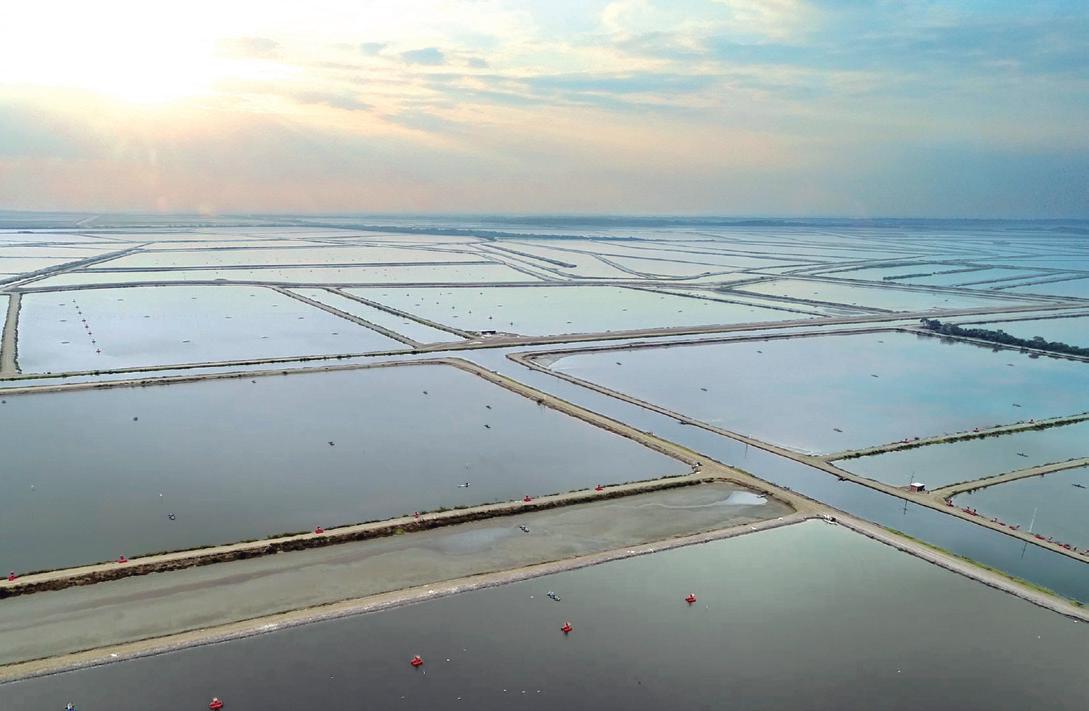
Probiotics are living organisms, and their efficacy depends on their ability to survive the harsh conditions of manufacturing, transportation, and storage before reaching the consumer.
Additionally, strain diversity and synergistic effects within probiotic formulations should be taken into account. Combining multiple strains that work well together can potentially enhance the overall health benefits, making it essential to understand the interplay of different strains. The selection of a probiotic strain involves navigating through various challenges and considerations. Understanding the health benefits, viability, safety, compatibility, and formulation dynamics are critical aspects that should be carefully evaluated by healthcare professionals and consumers alike to make informed choices for optimal health outcomes.
Producing stable and effective probiotic compositions for aquaculture feeds or water supplements is hard (Martínez Cruz et al., 2012). Temperature, pH, and shelf life must all be considered in order to keep the probiotic strains viable and functioning. The formulation and stability of probiotics pose considerable problems and considerations when developing effective and trustworthy solutions (Figure 2). One of the most difficult issues is developing probiotics that would remain viable and potent throughout their shelf life. Maintaining their viability during storage and distribution is critical to their effec-
tiveness. However, temperature variations, moisture, and light exposure can all have an impact on their stability, resulting in reduced potency and health advantages. Another crucial factor is ensuring probiotic strain survival in severe settings, such as the stomach’s acidic environment. Many probiotics must travel through the digestive system before they may exhibit their therapeutic effects in the intestines. As a result, developing probiotics with protective coatings or encapsulating methods to protect them from gastrointestinal acidity is a difficult undertaking.
Moreover, the compatibility of probiotics with various delivery for-
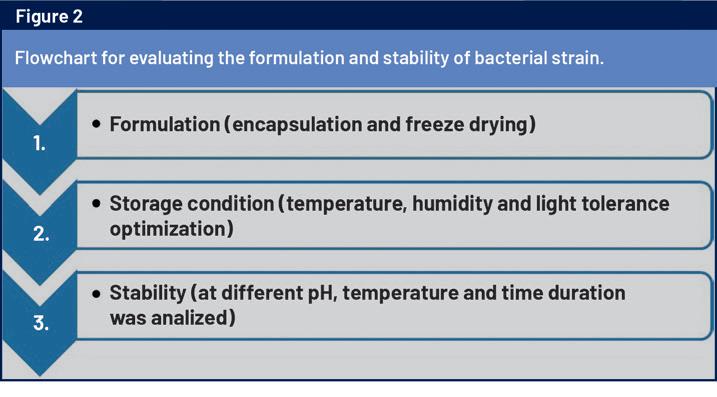
mats poses challenges. Probiotics can be found in various forms, such as capsules, tablets, powders, and even food products. Each format has unique requirements for stability and preservation, necessitating careful formulation to maintain the probiotic’s viability while ensuring consumer convenience. Standardization and quality control are also essential considerations in probiotic formulation. Since different strains of probiotics may have varying effects on health, it is crucial to accurately identify and quantify the strains in the product. Consistent manufacturing processes and rigorous quality control measures are necessary to ensure that the labeled probiotic content matches the actual content and potency. The packaging of probiotics is another crucial aspect to consider. Light, oxygen, and moisture can all degrade probiotic viability, so choosing appropriate pack-
aging materials that protect against these elements is essential.
Regulatory considerations must be taken into account during probiotic formulation. Different countries may have specific requirements for the registration and labeling of probiotic products. Complying with these regulations ensures that the product can be legally sold and marketed in various markets. Formulating and ensuring the stability of probiotics is a multifaceted task that involves addressing challenges related to viability, protection during transit through the digestive system, delivery formats, standardization, quality control, packaging, and regulatory compliance. By carefully considering these factors, manufacturers can develop probiotic products that are both effective and safe for consumers. Clear
One of the most difficult issues is developing probiotics that would remain viable and potent throughout their shelf life.
standards and regulations for the use of probiotics in aquaculture are required to ensure their safe and ethical use. One key problem is the lack of a standardized definition for probiotics, as there are numerous strains and formulations, each with distinct qualities and possible health advantages. This diversity makes it difficult for regulatory authorities to develop consistent evaluation procedures. When it comes to probiotics, safety is the most important consideration, especially given their extensive use in food and dietary supplements. The possibility of harmful effects, especially in susceptible populations such as fry, adults, or immune weakened fish, necessitates thorough safety evaluations. Furthermore, finding the optimal dosage and duration of probiotic administration necessitates substantial research to minimize unwanted outcomes.
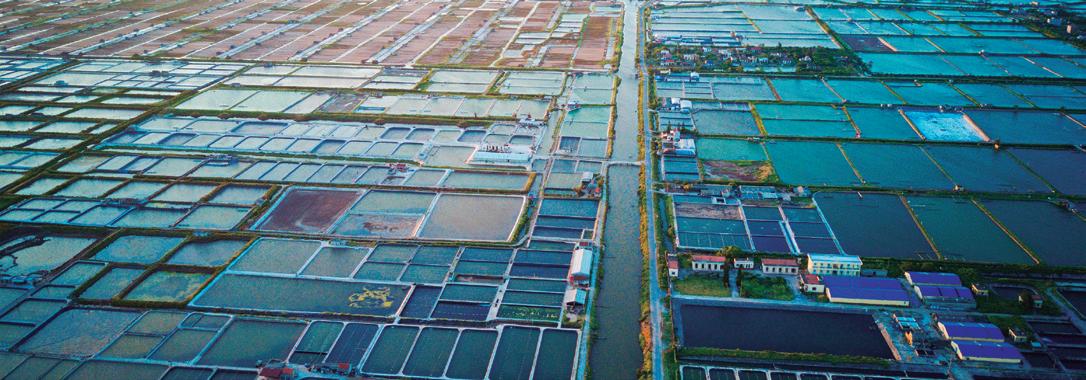
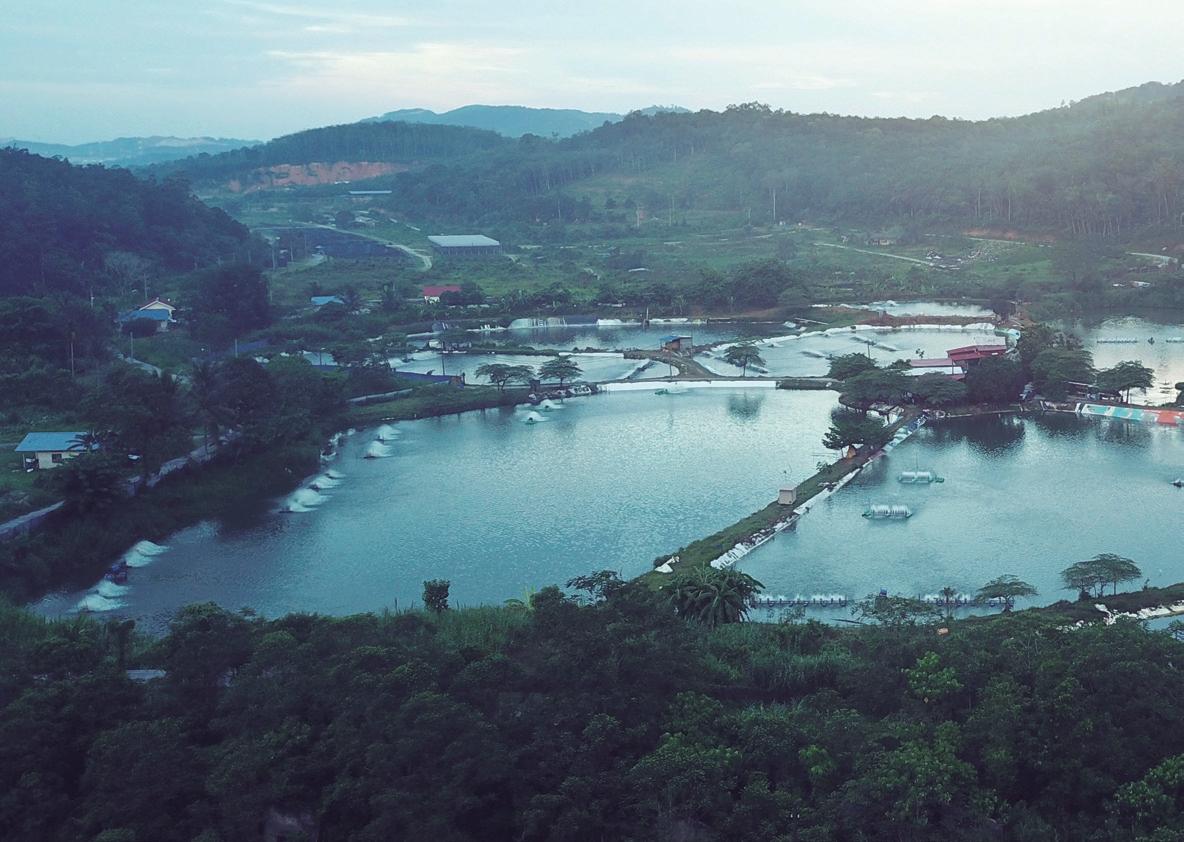
While probiotics have demonstrated potential outcomes in a variety of health issues, the data basis for particular applications can be inconsistent and limited.
Another important factor in regulatory approval is efficacy. While probiotics have demonstrated potential outcomes in a variety of health issues, the data basis for particular applications can be inconsistent and limited. Clinical trial data must be thoroughly evaluated by regulatory organizations to see if the claimed health advantages are backed by strong scientific evidence. Standardization and quality control are also major
concerns. To ensure the viability and stability of the living microorganisms throughout the product’s shelf life, the production procedure for probiotics must conform to high quality requirements. It is critical to ensure consistency in the strength and composition of probiotics in order to achieve the intended health benefits. In addition, any issues regarding product labeling and marketing claims must be subjected to rigorous
scrutiny. Claims that are misleading or overstated might lead to customer misunderstanding and erroneous expectations. Therefore, regulatory agencies must closely scrutinize product labeling and advertising to safeguard public health and prevent misinformation.
Furthermore, cross-border commerce and globalization bring distinct regulatory issues. Different nations’ standards and approval pro-

cesses for probiotic goods may differ, complicating worldwide distribution and compliance. Probiotic regulatory clearance necessitates a complex balancing act between encouraging innovation, preserving public health, and providing customers with trustworthy information. Collaboration between regulatory organizations, manufacturers, and the scientific community is critical to addressing these difficulties and ensuring that probiotics fulfill the highest safety and effectiveness criteria before entering the market.
Probiotics, like other aquaculture inputs, have related expenses. Costbenefit analyses (CBAs) can help farmers determine the economic sustainability of probiotic supplementation in their businesses (Wam-
bua and Jóhannesson, 2018). CBA is an important technique for assessing the economic impact of introducing probiotic goods, which are gaining popularity due to their potential health advantages. However, conducting a CBA for probiotics presents various problems and necessitates careful thought to get accurate and reliable results. Determining the true effects of probiotics might be challenging. While studies suggest that probiotics can improve gut health and immunity, their effects may differ greatly depending on the strain, dosage, and health issue they are intended to treat. Establishing a clear cause-and-effect relationship between probiotic use and specific health outcomes is critical for accurate CBA, but this can be difficult due to individual heterogeneity and the presence of confounding variables. The economic evaluation of probiotics must also take into account the wide spectrum of health issues that they address. From digestive issues to immune-related ailments, the prevalence, severity, and economic cost might vary greatly. To estimate the potential cost savings and benefits across such a broad range of health conditions, detailed data and credible models are required.
Moreover, the long-term effects of probiotic consumption need to be considered, as many health benefits may take time to manifest fully. Assessing the durability of probiotic effects and predicting their impact on healthcare costs and productivity over an extended period adds complexity to the CBA. Another challenge lies in accurately quantifying the economic benefits of probiotics beyond direct health outcomes. Probiotics might contribute to improved quality of life, reduced absenteeism, and enhanced fish productivity.
Furthermore, the cost component of CBA includes not just the price of probiotic goods, but also the costs associated with research, development, marketing, and distribution. Determining genuine costs can be difficult; especially as the probiotic industry
evolves and grows. Finally, doing a CBA for probiotics requires current and credible data on both health outcomes and cost aspects. As research in the topic continues, obsolete or insufficient data may result in false judgements, jeopardizing the analysis’s reliability. In conclusion, while cost-benefit analysis can be a useful method for assessing the economic consequences of probiotics, it is critical to recognize and address the issues and considerations that are specific to this field. Accounting for the intricacies involved will allow for more accurate assessments and informed decision-making when integrating probiotics into public health programs and individual healthcare practices.
The use of probiotics in aquaculture has promise advantages for fish health and illness prevention, but considerable difficulties remain for manufacturers. Strain specificity, dose optimization, cost analysis and environmental consequences all need to be carefully considered. Future study should concentrate on understanding host-microbe interactions and the long-term consequences by the formulating companies. A multidisciplinary approach is required to establish sustainable and successful probiotic methods in aquaculture.
References and sources consulted by the author on the elaboration of this article are available under previous request to our editorial staff.
*Nayan Chouhan and Bhavesh Choudhary College of Fisheries, Central Agricultural University, Lembucherra, Tripura, 799210 Email: nayan101chouhan@gmail.com
* By Antonio Garza de Yta, Ph.D.
For those still wondering what the FAO’s Committee on Fisheries (COFI) is, it is the place where all countries come together to set the course for the world’s fisheries and aquaculture, as well as the short-, medium- and long-term agenda. To put it in perspective, COFI is to countries what
WAS is to aquaculture professionals. COFI is held every two years at the FAO headquarters in Rome, where the work of the subcommittees on fish trade, fisheries management and aquaculture is approved. These subcommittees meet every two years in different countries around the world, in the years between COFIs, and work
continuously to achieve the goals set at those meetings. The last SubCommittee on Aquaculture (SCA) was held in Mexico and the next one will be held in Turkey.
It has been an honor for me to participate in both COFI and SCA since 2014 as WAS liaison to FAO, a relationship that has been consolidating and,
At the Sub-Committee on Aquaculture (SCA) meeting in Mexico in 2023, a recommendation was made to FAO member countries to adopt the Guidelines for Sustainable Aquaculture (GSA), which I believe is the organization’s greatest achievement in recent years.
Its content is not something that we professionals have not been aware of, nor is it something that will change the direction of the industry, but it is a clear guide for decision makers.
if COVID had not changed the plans of humanity, would have been crowned with the organization of our World Event and the SCA in parallel in the city of Merida in 2022. But well, the most important thing is that both the writer and you, who are reading these lines, we are here to tell the story.
To be honest, I think that the last few SCAs have gone by without much pain or glory, but it was at the last one, in Mexico in 2023, that the recommendation was made to FAO member countries to adopt the Guidelines for Sustainable Aquaculture (GSA), which I think is the greatest achievement of the organization in recent
years. I invite you to read them, because they actually say what all professionals in the sector know should be done, and what we have been relentlessly repeating for many years to countless decision-makers who have not understood, or have not wanted to understand, not only what aquaculture is capable of doing, but everything that is required for it to develop properly.
I will take the liberty of listing their objectives. They are as follows:
» “To provide policy guidance for the development and implementation of public policies, strategies and plans, and legal and institutional frameworks for the sustainable growth of aquaculture;
» To enhance the contribution of aquaculture to global food security, nutrition and poverty eradication, as well as to social welfare and economic development;
» Improve the socio-economic status of communities whose livelihoods depend on aquaculture through decent work and economic growth;
» Contribute to the achievement of sustainable use, responsible management, conservation and restoration of living aquatic resources, ecosystems and biodiversity, in accordance with the Code and other international instruments relevant to aquaculture, and to climate change mitigation.”
I repeat, its content is not something that we specialists were not aware of, or something that will change the course of the sector, but it is a clear guide for decision-makers, whether they are experienced or those who by chance find themselves in a position in the sector without any preparation, which happens in many cases more than we imagine. These guidelines provide the recommendations that Member States should follow if they want to develop aquaculture properly in their countries.
So, I can only congratulate Matthias Halwart and his team for being the unsung heroes of this story and for orchestrating one of the greatest achievements of aquaculture in the last decades... Bravo FAO!

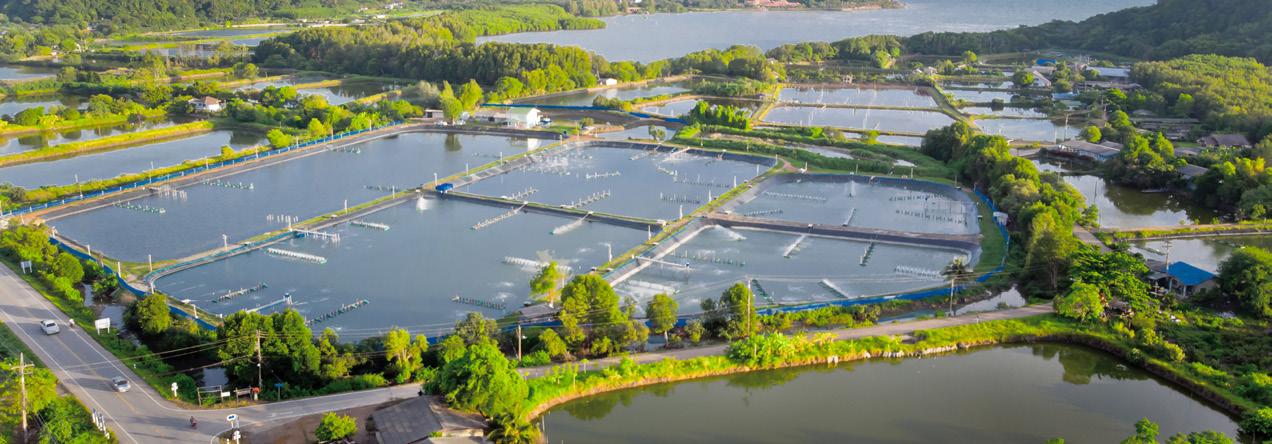
Climate is a complex phenomenon that shapes the habitability of environments. Climates are constantly evolving in response to many variables. These changes can have broad impacts on plants and animals, usually as a result of small changes over time, but on occasion large changes can and do occur quickly.
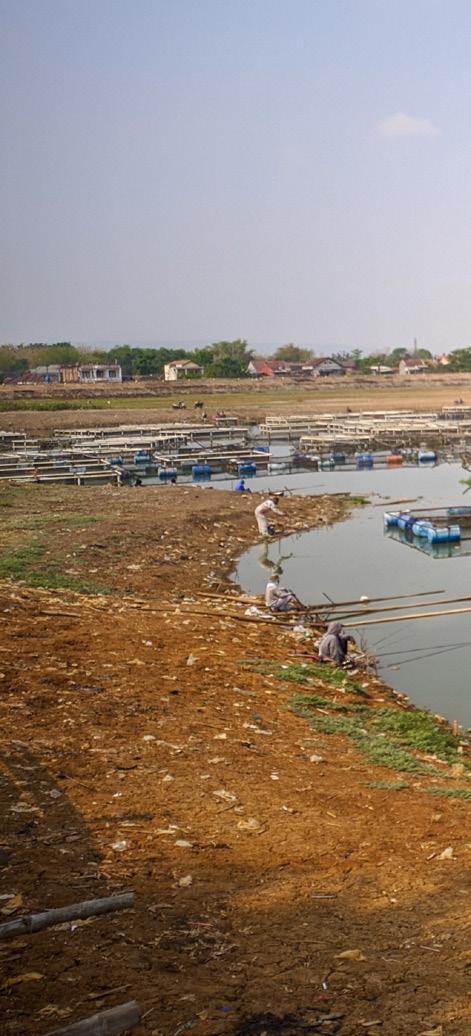
* By Ph.D. Stephen Newman
Among the changing variables are the greenhouse gases. These include water vapor, methane and carbon dioxide. Carbon dioxide levels in May of 2024 reached the highest recorded levels since humanity started keeping records. The levels were 3% higher compared with the same time
period last year. This is the greatest single increase recorded and indicative of what lies ahead. Some of the variables are impacted as a result of the nature of Earths ecology, the influence of the sun, the tilt of the Earth’s axis, etc. Some are the result of human activity, such as damaging environments via practices that are
essentially not sustainable. Pollution is a catch all term for the addition of substances to the environment that have a negative impact.
There are many examples where human activities have impacted the climate. Globally we are also seeing a reduction in oxygen levels in many fresh and saltwater ecosystems. These
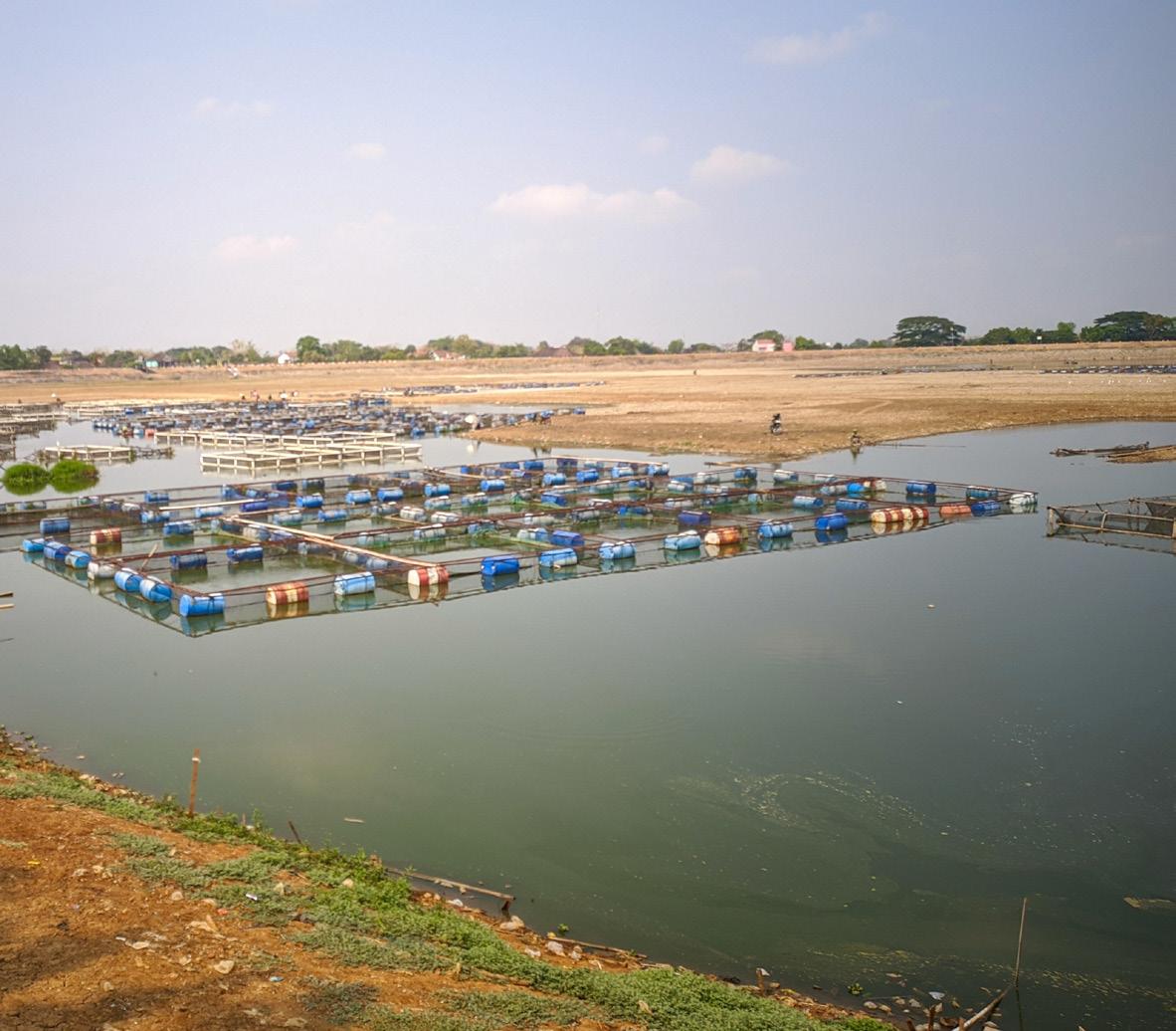
With
that said, the purpose of what I am writing is not to persuade the reader one way or another as to the causes, but only to consider that many agricultural activities remain to be impacted and that the rapidly growing international aquaculture productivity is highly vulnerable to negative impacts.
include widespread desertification (the Sahara was once a lush tropical forest) and increased frequency and types of algae blooms in estuaries and other bodies of water. Add to this the presence of regional temperature fluctuations that make the environment inhospitable to the normal activities of humans and other animals
and the scenario has been set for a warmer world with its challenges.
At the moment, Earth is in the midst of a cycle that is between an ice-age and a much warmer planet. One must recognize that humans can have profound negative impacts on their environment. As the human population continues to increase,
this can shape environments in ways that make them less hospitable for human beings. What is occurring is quite complex. Climate change is inexorable and normal although human influence is pernicious.
Humanity collectively is certain to increasingly comprehend the nature of the factors that are elements
Humanity collectively is certain to increasingly comprehend the nature of the factors that are elements of the changes we are seeing.
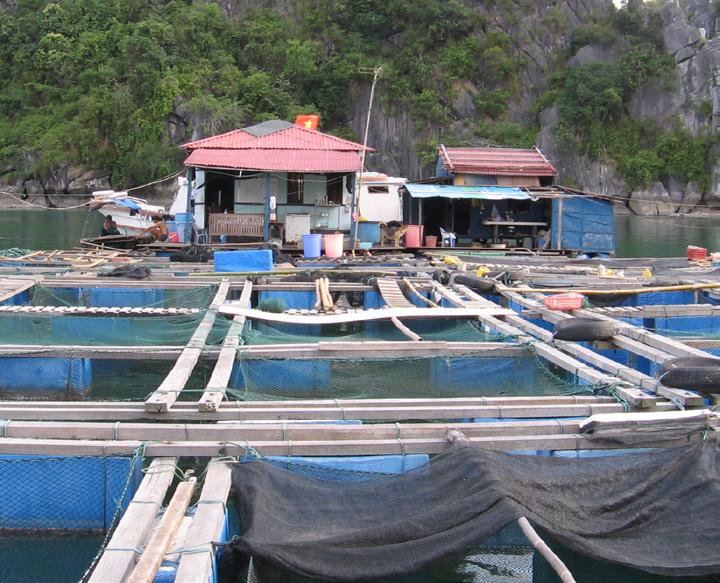
of the changes we are seeing. For now, though what is quite apparent is that human activity is increasing the amount of carbon dioxide in the atmosphere and that there is no evidence to the contrary. With that said, the purpose of what I am writing is not to persuade the reader one way or another as to the causes, but only to consider that many agricultural activities remain to be impacted and that the rapidly growing international aquaculture productivity is highly vulnerable to negative impacts.
Global average temperatures are increasing, and we are seeing new records being set every year. There are potential huge indirect impacts. This heating is causing huge areas of permafrost, permanently frozen ground, to thaw, releasing methane, a byproduct of bacterial decomposition of plant matter and a very potent greenhouse gas. All indications are that it appears highly likely that short of an event that causes rapid dramatic cooling (such as a very large volcanic explosion, Earth being struck by a large asteroid or, heaven forbid, a nuclear war) the trend will be to see gradual but rapidly increasing
global atmospheric and ocean temperatures. The extent of the impact will depend on how high the average increases are and how these impact overall climatic conditions. Even if humanity can slow the rate of increase or bring it to a halt, the impact will not go away.
One observation that is apparent is that not everywhere is impacted in the same manner. Periodic climate trends, such as those from El Niño and La Niña can and do impact certain areas geographically. As record keeping trends reveal, the overall trend appears to be towards increased Ocean water temperatures along with increases in Ocean levels as ice melts from Glaciers, etc. There is no sign that this is slowing down. All indicators show that these are increasing.
My thesis here is to speculate on what the impact will be on the global aquaculture industry which is wholly dependent on access to environments that are conducive to the optimum production of the species being farmed. Aquaculture is the production of animals and plants in aquatic ecosystems. As global population
continues to increase, the need for high quality and minimally disruptive sustainable technologies for food production are essential. When practiced responsibly using truly sustainable practices, aquaculture is a valuable source of low-priced nourishing protein. Although aquaculture is not conducted everywhere in a responsible manner, it is widely recognized that we must move towards this. Polluted environments are not conducive to optimum, profitable aquaculture production.
It is highly likely that the climate changes that are occurring will impact aquaculture regionally initially. I would expect that what we will see is areas where the ability to produce an aquatic animal year-round is no longer possible. There will be times when the environment is not suitable for the production of the species that have been traditionally farmed in these areas. Of course, it follows as well that natural populations will be affected and that they will either adapt or relocate where possible to less hostile, ecologically friendlier, environments. Farmers can shorten cycles and let ponds and or cages fal-
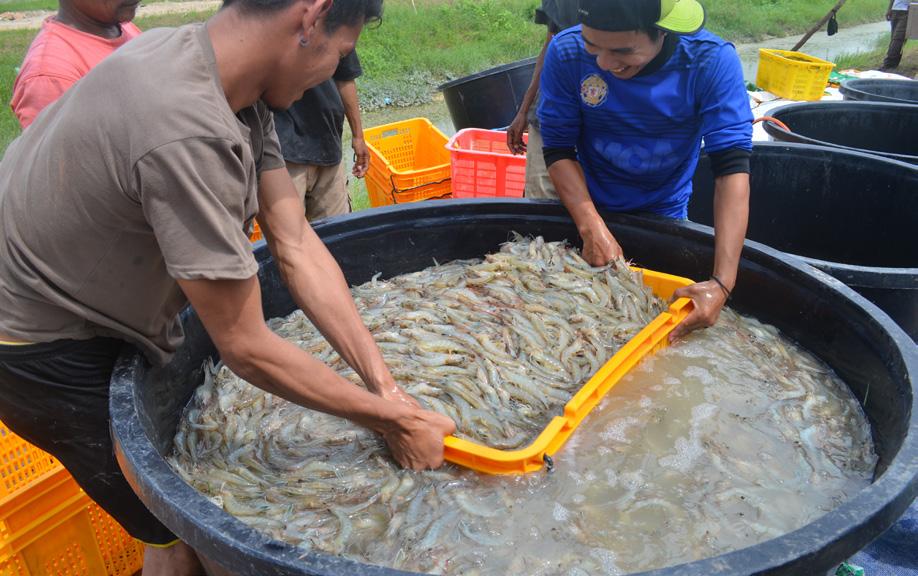
Genetic improvement of animal’s ability to tolerate the extremes that are likely to become the norm is one possibility although there are more than likely practical limits in terms of what temperatures and other environmental extremes animals can tolerate and for how long before they deteriorate.
low during the months when temperatures are too high for production. In some cases, they may be able to offset minor changes by digging deeper ponds or submerging cages into cooler waters. In others not so.
The graph below shows how average monthly global temperatures have been increasing more or less consistently from the year 2000 on. It is evident that both the rate and the quantity are increasing.
While there is a certain amount of unpredictability as to where and what types of production paradigms will be impacted and to what extent, what it is evident that we need to take steps to minimize this gradually increasing impact. If we do not, the consequences will be the loss of or at the very least a decrease of production capacity.
Indoor production using recirculating systems (RAS) offers some hope to offset some of this although it is highly unlikely that RAS will be able to replace the overall volumes.
While this technology is still maturing in a sense, the overall costs tend to be much higher than current open environment practices. Note that this is not black and white.
At this point in my life, I am quite cynical about humanity’s ability to address this in a logical manner. It does not appear that we can stop the global freight train that overpopula-
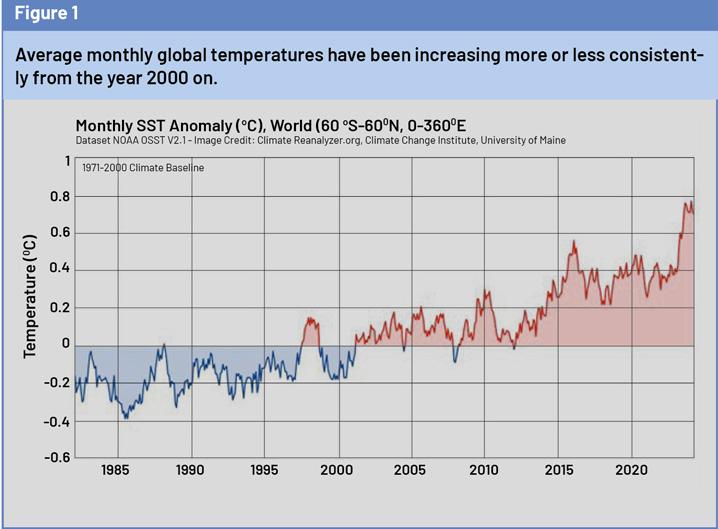

As the human population continues to increase, this can shape environments in ways that make them less hospitable for human beings.
tion is ensuring is bearing down on humanity. While there are some that will tell you that there are sufficient resources that if more uniformly available would ensure adequate nutrition for all, I see this as wishful thinking. Others will tell you that the Earth’s resources are being depleted at an alarming rate and that if we don’t pare our population down, we will shape environments that are hostile for agriculture and thus human sustainability.
Aquaculture will be affected in several ways. One will be that areas that have been friendly to cage culture in shallow environments will no longer be. One must also consider that production requires sources of nutrients. Shrimp and fish need manufactured feeds to ensure acceptable growth
rates and reasonable costs of production. Fish meal is a major component of the feed for many farmed marine animals, and it relies on dense populations of species that are not widely used for food. It is highly likely that these environments will be impacted and that this will either presage an extinction event or the populations will migrate to less stressful environments. Access to food is a critical element of this.
There are no crystal balls. However, there is little if any doubt that anthropogenic influences are impacting that rate and manner of climate change. While at the moment we are in the early stages of the disruption that this will bring about, it is essential that we model the potential impacts and plan accordingly for aqua-
culture to become truly sustainable. The wild fisheries are being impacted as I write. Salmon runs (baby salmon - smolts moving from their freshwater places of birth to the open ocean) are being impacted by high temperatures in critical water pathways to the ocean. High levels of mortality have been observed in some runs and proposed solutions are to truck animals to avoid these areas. As the waters continue to warm this will have challenges. Oxygen levels are decreasing globally in many fresh and saltwater environments. What can be done?
Genetic improvement of animal’s ability to tolerate the extremes that are likely to become the norm is one possibility although there are more than likely practical limits in terms of what temperatures and other en-
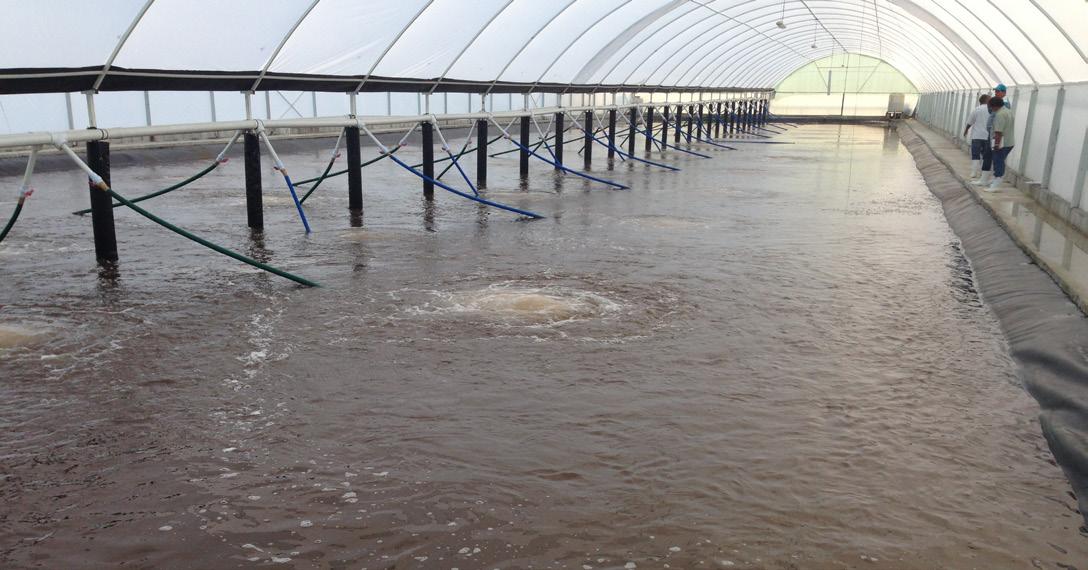
vironmental extremes animals can tolerate and for how long before they deteriorate. Weakened animals are typically susceptible to pathogens and obligate pathogen levels required to produce disease may lessen and any number of opportunistic pathogens may become increasingly lethal. Initially more than likely, we will see a geographic shift to allow production in areas that are more suitable. As climate change continues, these will become fewer and fewer. RAS offers some potential, but as alluded to ear-
lier, it cannot economically replace all of the species being reared in economically viable manners. Shortages of specific species will impact their availability and in turn will drive up prices. This will limit demand and eventually some species may simply be too costly to produce economically. As traditional areas of production become less able to sustain the levels of historic production, either they will attempt to relocate, or productivity will wane in some instances to the point where there is little if any production.
there will be a limit to the impact. Regardless it is highly probable that all agricultural practices whether it is producing wheat, farming chickens and beef or aquaculture will be adversely impacted.
Periodic climate trends, such as those from El Niño and La Niña can and do impact certain areas geographically.
Given that it is speculative as to the rate and locations where this will occur, it will be a huge challenge to ensure that sustainable production paradigms take this into account. Time will tell. The traditional poverty driven production paradigms in some parts of the world will more than likely fade away. Larger vertically integrated corporate producers will relocate where resources allow although it is far from certain where all of this will end up. Some predict that large swatches of those areas that humans currently live in will become too hostile for daily living and that there will be forced mass migrations. Others speculate humans will adapt and that
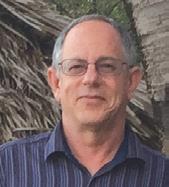
* Stephen G. Newman has a bachelor’s degree from the University of Maryland in Conservation and Resource Management (ecology) and a Ph.D. from the University of Miami, in Marine Microbiology. He has over 40 years of experience working within a range of topics and approaches on aquaculture such as water quality, animal health, biosecurity with special focus on shrimp and salmonids. He founded Aquaintech in 1996 and continues to be CEO of this company to the present day. It is heavily focused on providing consulting services around the world on microbial technologies and biosecurity issues.
sgnewm@aqua-in-tech.com www.aqua-in-tech.com
www.bioremediationaquaculture.com
www.sustainablegreenaquaculture.com.
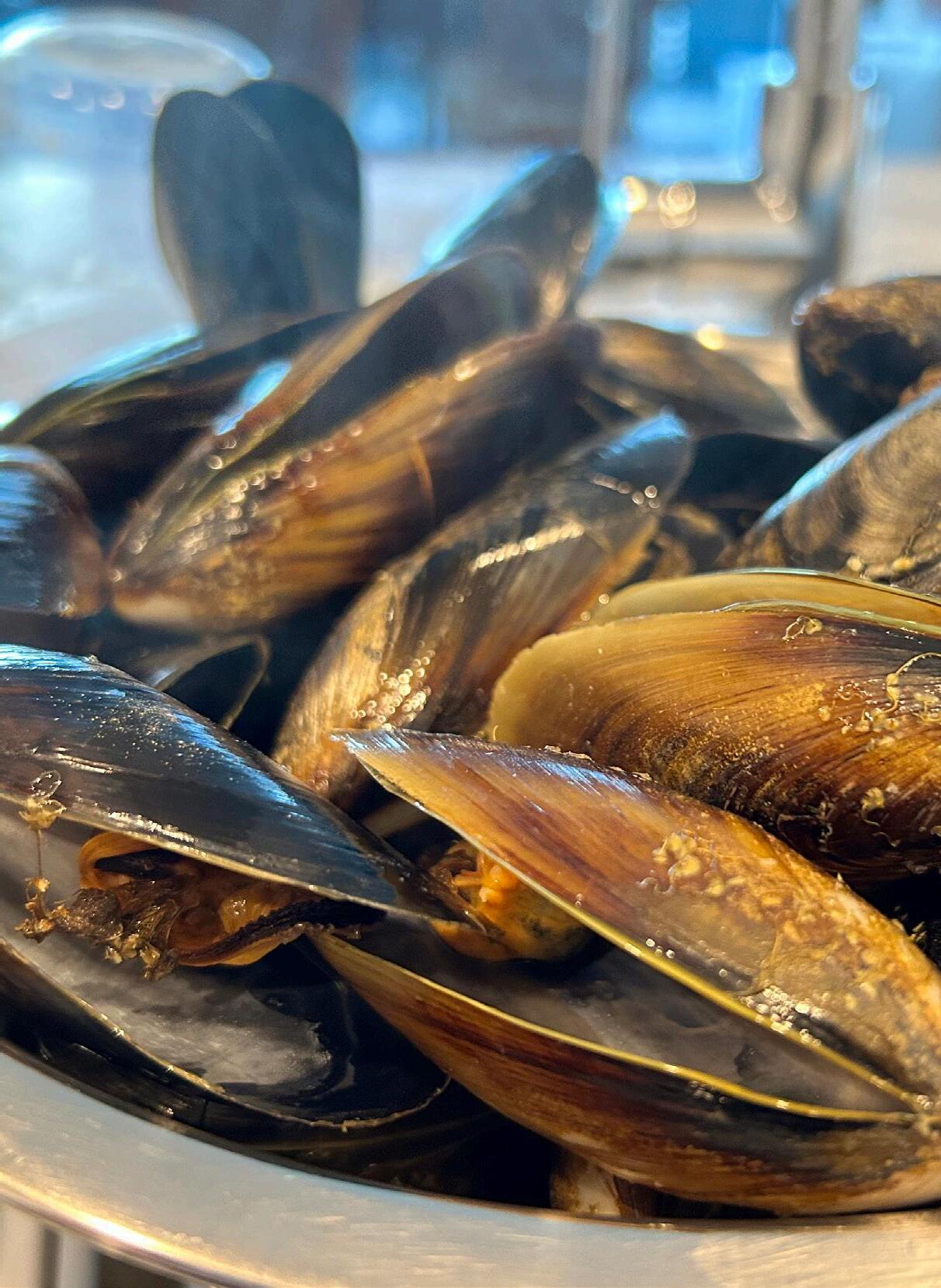
* By FishProf
Activism is everywhere! Everywhere except in creating more resilient global seafood industry alliances with more concentration on collaboration and less on internal competitive behavior between wild-harvest and aquaculture; between domestic and imports and between large retailers who seem more interested in promoting their own standards as against one global standard. These internal industry activities are taking our eyes off the main game.
In a recent J P Morgan (JPM) publication “Climate adaptation- How investors can support adaptation in nature and ecosystem”. The FishProf read that “Climate-driven damage to ecosystems and the accelerating loss of biodiversity have far-reaching consequences for our economy and society. However, as we attempt to respond to these paired crises, it is critical to understand that even degraded natural systems can still adapt, meaning that they retain the ability to respond dynamically to changes in the environment, helping them to mitigate damage, create benefits and maintain their value.” We see this constantly with fish stocks and good management practices.
While Nature is under pressure from the volume of humans on the planet and some of the stupid things that humans do all is not lost. No one is saying do not prolificate, in fact many countries are doing the opposite! So, if we continue to grow the population then we all must understand the consequences and work with Nature because it does have the resilience to cope.
We, as a global industry, need to think much more about not wasting our collective resources. The FishProf recalls many years ago someone saying that what the industry needed was assembling the best workable standards, aligning them and making them global and getting governments and industry to sign off to the process. At the moment we have too many certifications/accreditations. The sheer number is not assisting as that works against
The FishProf has been noticing everyday how minority groups are impacting majority groups and is worried how this is playing out in aquaculture and seafood as we are not being proactive.
clarification and it certainly creates costs and confusion.
Sitting in a restaurant with a healthy, deliciously tasty meal of fresh fish and a salad and a glass of wine (milk for the children), followed by a blueberry and yoghurt dessert may not be good enough for the green food police.
Activists want to shame those that eat such healthy meals and all those in the supply chain that are working hard to deliver that. “Think about the greenhouse gas emissions, the wastewater, the habitat loss and how you are hurting the fish” they say. Add a spoonful of guilt to the sauce; create issues about the packaging not being biodegradable nor recyclable, add food miles to the story with questions on fair trade and its headlines in the media. Negativity is easy to sell!
Many countries are now looking outside “nutrition”, by creating “sustainable diets” as a “very high priority” in revising dietary guidelines. The FishProf believes this ideologically driven interference is likely to make many health practitioners, patients and those interested in healthy eating take the guidelines with a big pinch of sea salt.
Be well aware that activist organizations are feeding lots of negative concepts into your nation’s main health advisory bodies. They have worked people into the inside of the decision-making process about what “sustainable diets” actually mean. As a health advisory you would assume that ‘health’ is the priority, but they now use words like “accessible, affordable and equitable diets with low environmental impacts “as a definition.
In Australia, as an example, its current guidelines list “food, nutrition and environmental sustainabil-
ity” as appendix G, making them easy to miss. In the new guidelines, due in 2026 do not be surprised that sustainability will be upfront “to improve integration of messages about food sustainability into the guidelines”. Our industry needs to be pro-active in this space.
Sadly, The FishProf finds industry, constantly stuck in the past or the present at best, just hoping that the majority of people are too busy looking for bargains at the markets, cooking their favorite seafood or making school lunches to pay attention. But the day of reckoning is coming, and little thought is going into the future and globally collaborating and learning from each other.
In the red meat industry, it is recently reported that farmers, are preparing for an avalanche of green tape and extra costs to comply with new rules for climate reporting and are rightly annoyed and worried.
“Individuals have the right to feed their families nutritious food without mixed messaging about the environment or other sustainability considerations”, Red Meat Advisory Council chairman John McKillop was recently reported.
He added “Expanding the dietary guidelines into other non-nutritional related areas will create confusion and undermine their purpose and the public’s confidence in them. Dietary guidelines, he says, should focus on promoting public health, preventing chronic diseases and ensuring Australians have access to accurate and reliable information about their basic nutritional requirements.”
Fisheries and aquaculture are almost entirely dependent on nature. Given the need for production of economic essentials, such as food, fibers,

While
Nature is under pressure from the volume of humans on the planet and some of the stupid things that humans do all is not lost. No one is saying do not prolificate, in fact many countries are doing the opposite!
fuels and raw materials, the potential economic impacts of failing to adapt to nature loss are significant.
These impacts are further highlighted by the fact that seafood has two distinct industries – wild harvest and aquaculture. The product funnels through the same supply channels to the consumer. Many countries still have aquaculture locked into their fishery legislation. The industries are very different but must work together as ‘seafood’ if we are to collectively defeat the activists.
The fishing industry is at risk. JPM report states that ocean warming could reduce fish catches by 8% and fisheries revenue by 10% by 2050, affecting the livelihoods of up to 800 million people.
Analysis by FAIRR, an investor network focused on environmental, social and governance risks in the global food sector, found that a third of the world’s 40 largest livestock producers could lose around USD 24 billion by the end of this decade should global temperatures rise more than 2°C above pre-industrial levels. This amount is the equivalent of cost increases of over 30% by 2030.
Against this challenging backdrop, the food and beverage industry face the task of raising output to cope with a rising global population, while minimizing the impacts on nature.
Achieving this delicate balancing act entails collaboration with specialist equipment companies, environmental scientists, and investments in pro-
cesses, products and practices to ensure full chain reform.
Capital markets provide investors with an opportunity to help the food industry address this challenge through adaptation for nature. Climate resilient solutions include the application of precision techniques in farming that minimize the use of water and the application of fertilizers while improving crop yields. Companies such as Shrimpl have adopted software and data intensive techniques in shrimp farms as the old adage of you cannot manage what you cannot measure is very relevant. Digital data and mapping solutions for aqua farmers facing water stress from drought, floods and irrigation solution provides sensors and data
to irrigate fields in a timely, calibrated manner to save water and boost yields. Moving further along the value chain, circular solutions in plasticfree packaging for safer storage and transport of food and beverages that minimizes food loss are also provided by specialist companies.
The JPM report suggests you cannot stand still. Many ideas which are already appearing on the horizon such as offshore aquaculture; using eDNA sampling to enable better management of fisheries and traceability eliminating fraud; circular models of packaging including biodegradable/reusable soft packaging; climate information services to enable strategic decision-making sustainable management of water systems; improved genetics; expanding use of refrigeration in food supply chains; mobile-first food marketplaces to reduce landfill waste; enhanced digital connectivity, for example instant access to contracts, prepaid commodity balances and market information; fully traceable/shortened supply chains to reduce waste and monitor climate risks; container farming technology enabling on-site food production anywhere (aquaponic growing systems) and improved
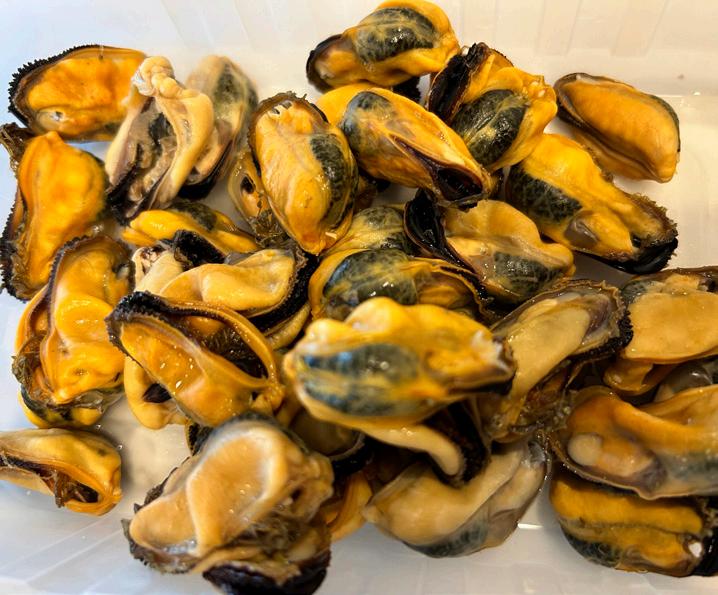
waste management solutions, for example “B2C” (business-to-consumer) marketplaces for surplus food. We all have a role to play!
Sitting in a restaurant with a healthy, deliciously tasty meal of fresh fish and a salad and a glass of wine (milk for the children), followed by a blueberry and yoghurt dessert may not be good enough for the green food police.
It is reported that Mark Davie, Australian Beef Sustainability Framework Chair, says recommendations to curb emissions from the food sector should focus first on food waste which, if measured as a country, would be the world’s third biggest carbon emitter. Adding that any official advice warning against beef production on the basis of sustainability will undermine the industry’s efforts to reduce emissions, including the millions of dollars poured into products such as Asparagopsis seaweed, which can reduce methane emissions by up to 98 per cent. A win for aquaculture there!
JPM conclude that the foundational role of nature in sustaining the global economy is gaining increasing recognition, as are the risks to nature posed by climate change and they appeal to investors to direct capital to benefit from opportunities across sectors and regions, while helping to enable essential adaptation for and by nature in the process.
However, in the seafood industry there is still insufficient discussion of how nature and ecosystems can be supported to adapt to climate change - in turn supporting economic sectors that depend on natural resources and ecosystem services along with collaboration on one sustainable seafood certification system and standard. More work is required… it needs more global collaboration.
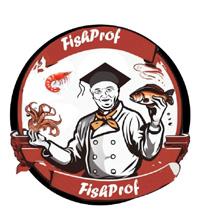
References and sources consulted by the author on the elaboration of this article are available under previous request to our editorial staff.
Regular contributor The Fishmonger has now morphed into FishProf and will continue contributing to AQUACULTURE MAGAZINE, but also welcomes all the readers to connect through www.fishprof.com and join in our promotions to increase seafood consumption globally.

AUGUST 2024
THE AQUA CULTURE EXPO
Aug. 09-11, 2024
Delhi NCR: India Expo Mart, Greater Noida
T: +91 74199-93003 | +91 74199-93001
E: info@theaquacultureexpo.com W: theaquacultureexpo.com/
18th INTERNATIONAL VIRTUAL FORUM ON AQUACULTURE 2024
Aug. 20-21, 2024
VIRTUAL https://design-publications.zoom. us/webinar/register/4417230342678/ WN_327cXKqqQBm3Jfd86QQ9dw?utm_so urce=Bolet%C3%ADn+semanal+de+PA M&utm_campaign=cce8da8be8-EMAIL_ CAMPAIGN_2024_08_07_10_22&utm_ medium=email&utm_term=0_cce8da8be8-%5BLIST_EMAIL_ID%5D&mc_ cid=cce8da8be8&mc_eid=bb06301889#/ registration
BLUE FOOD/GREEN SOLUTIONS AQUA 2024
Aug. 26-30, 2024
Copenhagen, Denmark
T: (+1) 760 751 5005
Fax: (+1) 760 751 5003
E: worldaqua@was.org W: www.was.org
WORLD SEAFOOD SHANGHAI EXHIBITION (SIFSE)
Aug. 28-30, 2024
Shanghai
T: +86 21 6775 9097
E: fay.lam@ite-gehua.com W: international@sifse.com
LIVESTOCK CAMBODIA 2024
Aug. 28-30, 2024
Da Kao Ward, Dist 1, HCMC, Vietnam T: +84 28 3848 8561/ 8562/ 8563 E: info@veas.com.vn W: livestock-asia.com/cambodia-1.html
SEPTEMBER 2024
SEAFOOD EXPO ASIA 2024
Sept. 4-6, 2024
Singapore T: +1-207- 842-5504
E: info-asia@seafoodexpo.com W: https://www.seafoodexpo.com/asia/
INTERNATIONAL AQUACULTURE & FISHERIES
EXPO TAIWAN
Sept. 11-13, 2024
Taipei City 10461, Taiwan
T: +886-2-2598-2630
E: maurycy_baranski@myexhibition.com.tw W: https://www.taiwanagriweek.com/en/ about/IAFET/
LATIN AMERICAN & CARIBBEAN
AQUACULTURE 2024
Sept. 24-27, 2024
Medellín, Colombia
T: (+1) 760 751 5005
Fax: (+1) 760 751 5003
E: worldaqua@was.org W: www.was.org
OCTOBER 2024
AGRAME
Oct. 07-08, 2024
Dubai World Trade Centre
Dubai, UAE
T: +44 (0) 7305288348
E: brent.crosbie@informa.com
W: https://informaconnect.com/agra-middleeast/
FUTURE FISH EURASIA
Oct. 10-12, 2024
Izmir, Turkey
T: +90 212 347 10 54 (pbx)
E: info@eurasiafairs.com
W: eurasiafairs.com/eng/index.html
AQUAEXPO GUAYAQUIL 2024
Oct. 21-24, 2024
Guayaquil, Ecuador
T: (+593) 4 268 3017 ext. 124
E: cmosquera@cna-ecuador.com
W: www.aquaexpo.com.ec/
SEAFOOD SHOW LATINAMERICA
Oct. 22-24, 2024
Anhembi Distrit, Sao Paulo, Brazil
T: (11) 2226-3100
E: cs@francal.com.br
W: https://seafoodshow.com.br/
CHINA FISHERIES & SEAFOOD EXPO
Oct. 30-Nov. 1, 2024
Beijing 100022 P.R. China
T: +86 10 58672620
E: info@seafarechina.com
W: https://chinaseafoodexpo.com/
AERATION EQUIPMENT, PUMPS, FILTERS AND MEASURING INSTRUMENTS, ETC
DELTA HYDRONICS LLC....................................9
T: 727 861 2421 www.deltahydro.com
EVENTS AND EXHIBITIONS
AQUA 2024 BLUE FOOD / GREEN SOLUTION........................INSIDE COVER
Aug. 26 - 30, 2024. Copenhagen, Denmark. Tel: +1 760 751 5005
E-mail: worldaqua@aol.com W: www.was.org
AQUACULTURE AFRICA 2024......INSIDE COVER
Nov. 20-23, 2024. Hammamet, Tunisia
T: (+1) 760 751 5005 Fax: (+1) 760 751 5003 E: worldaqua@was.org W: www.was.org
ASIAN-PACIFIC AQUACULTURE 2024..INSIDE COVER
July 2-5, 2024. Surabaya, Indonesia
T: (+1) 760 751 5005 Fax: (+1) 760 751 5003
E: worldaqua@was.org W: www.was.org
LATIN AMERICAN & CARIBBEAN AQUACULTURE 2024..................................................INSIDE COVER
Sept. 24-27, 2024. Medellín, Colombia
T: (+1) 760 751 5005 E: worldaqua@was.org W: www.was.org
TANKS AND NETWORKING FOR AQUACULTURE
REEF INDUSTRIES..............................................1 9209 Almeda Genoa Road Z.C. 7075, Houston, Texas, USA. Contact: Gina Quevedo/Mark Young/ Jeff Garza. T: Toll Free 1 (800) 231-6074 T: Local (713) 507-4250
E-mail: gquevedo@reefindustries.com / jgarza@reefindustries.com / myoung@reefindustries.com www.reefindustries.com
REEFER CARGO MSC................................................BACK COVER T: +52 55 5091 7070 www.msc.com/seafood
AQUACULTURE MAGAZINE.....5, INSIDE BACK COVER
Design Publications International Inc. 401 E Sonterra Blvd. Sté. 375 San Antonio, TX. 78258, USA Office: +210 504 3642 Office in Mexico: +52(33) 8000 0578 - Ext: 8578
Subscriptions: iwantasubscription@dpinternationalinc.com
Sales & Marketing Coordinator crm@dpinternationalinc.com | Cell: +521 33 1466 0392
Sales Support Expert sse@dpinternationalinc.com | Cell:+521 333 968 8515 www.aquaculturemag.com
Panorama Acuícola Magazine Empresarios No. #135 Int. Piso 7 Oficina 723 Col. Puerta de Hierro, C.P.45116 Zapopan, Jal.México Office: +52 (33) 8000 0578
Contact 1: Subscriptions E-mail: suscripciones@panoramaacuicola.com Office: +52 (33) 8000 0629 y (33) 8000 0653
Contact 2: Sales & Marketing Coordinator. crm@dpinternationalinc.com | Cell: +521 33 1466 0392
Contact 3: Sales Support Expert
E-mail: sse@dpinternationalinc.com www.panoramaacuicola.com

